Ubud, in many ways the center of Bali, welcomes visitors with great culture, some fascinating tradition – and even some monkey business.
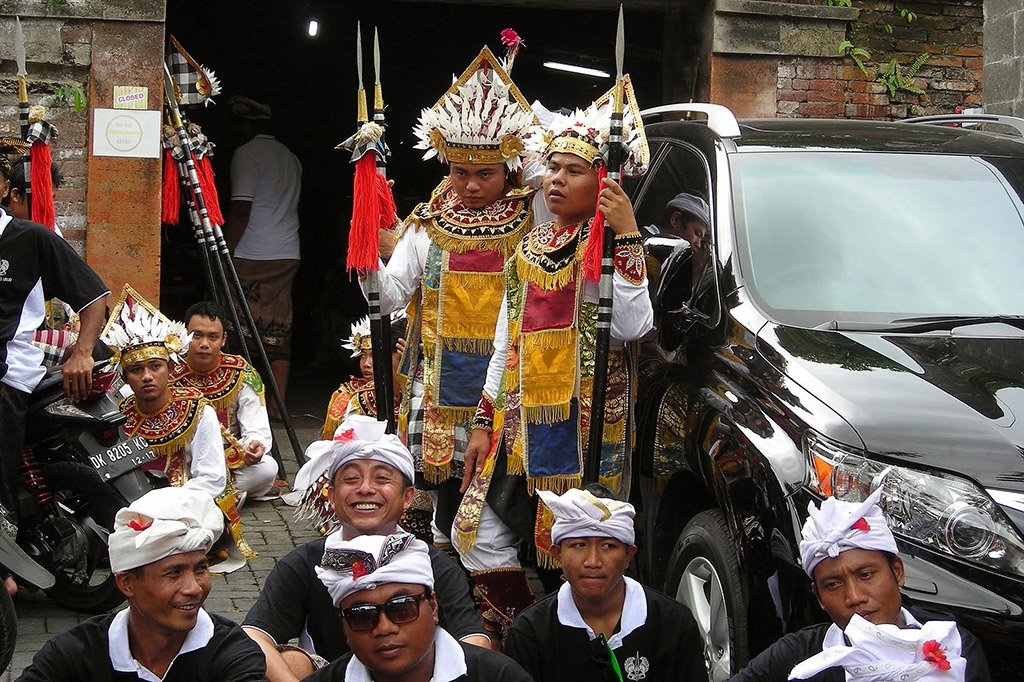
In my post on the beach resort Legian, I mentioned how divided my friends’ reactions to my trip to Bali were. Some said it was mass tourist hell, others found serenity and spirituality between beautiful rice paddies.
That’s the Spirit…Not!
Ubud is one of those spiritual destinations. But don’t kid yourself, Ubud is by no means this untouched hinterland. Ubud lost its innocence to a different kind of tourist. Those who don’t feast on beer and steaks but enjoy vegan cuisine and fresh-squeezed smoothies. Those who don’t recover from last night’s hangover on a beach chair but cleanse their body and soul in a yoga class.
Nevertheless, many of those folks are not only carrying their yoga mat around Ubud, but also a huge chip on their shoulder. And while I can cope with this kind of tourism better than with the drunks in Kuta, it’s destroying social structures, tradition, and culture just the same. Or did you ever see traditional Balinesians enjoying a vegan meal after their yoga class?
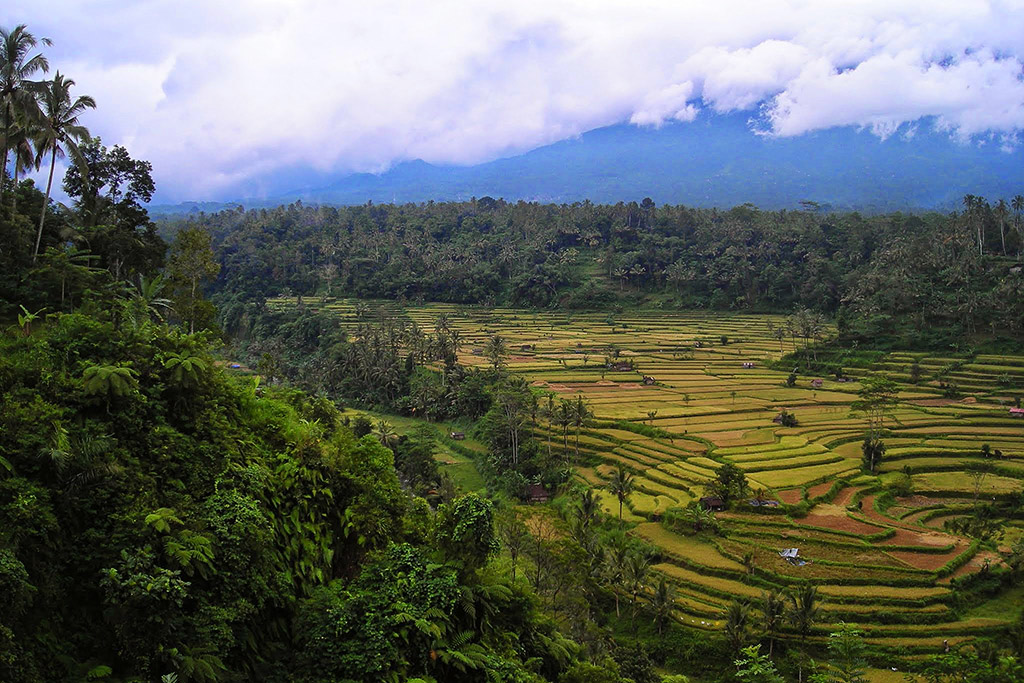
Also, Ubud is becoming quite popular among the digital nomad community. And although the authorities are encouraging the infiltration by so-called influencers, the impact on the local community is at least economically rather negative. Although those foreigners are contributing a bit to the economy, they cause a price gouge so that goods and services become unaffordable for the locals.
Obviously, this problem is not endemic to Bali.
Guests From Out Of Town
In pre-colonial times, Ubud was the seat of Bali’s feudal princes. During the Dutch colonial rule, those aristocrats were disempowered. Nevertheless, members of the former feudal clans still have remarkable significance in Bali.
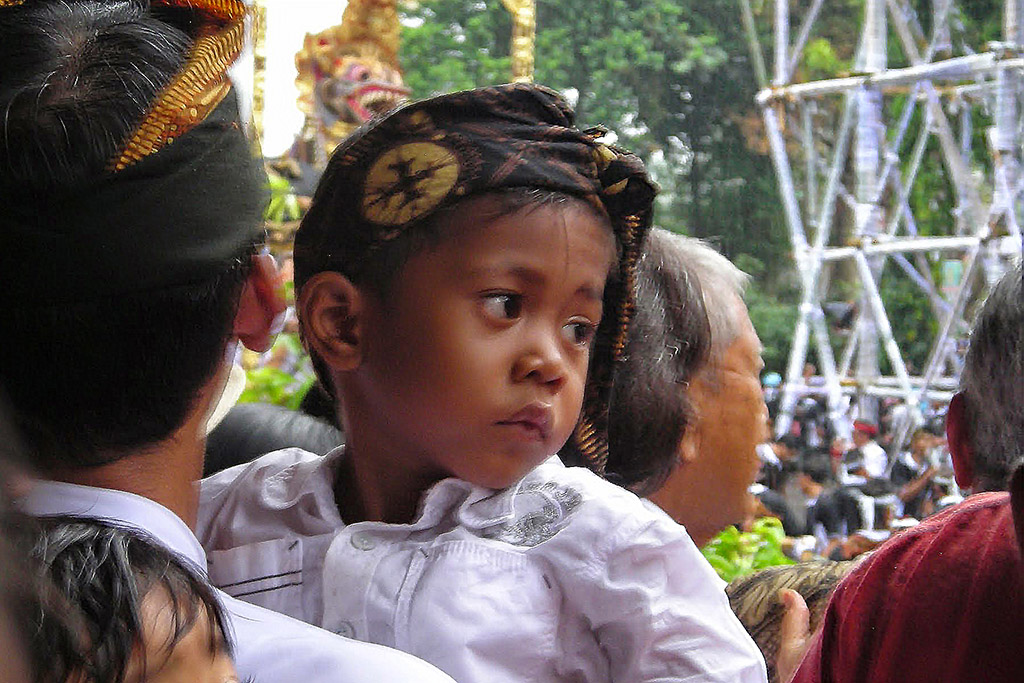
To this date, Ubud is considered the artistic capital of Bali. Fine painting, textile art, and traditional wood carvings are made and exhibited in Ubud. Consequently, the town has also been the residence of European and American artists since the 1920s.
Since 1927, German musician and painter Walter Spies lived in Ubud. At times, the Austrian-German-American musician and writer Vicki Baum joined him as his guest. She has written a gripping and highly interesting novel on the life of feudal and simple folks in Bali during pre-colonial times. Don’t let the terribly cheesy title Love and Death in Bali scare you away. You’ll learn so much about Balinese customs and traditions. And even if the glimpse behind closed doors will not always find your consent, the explanations will make you understand many aspects of Balinese life and definitely enrich your stay.
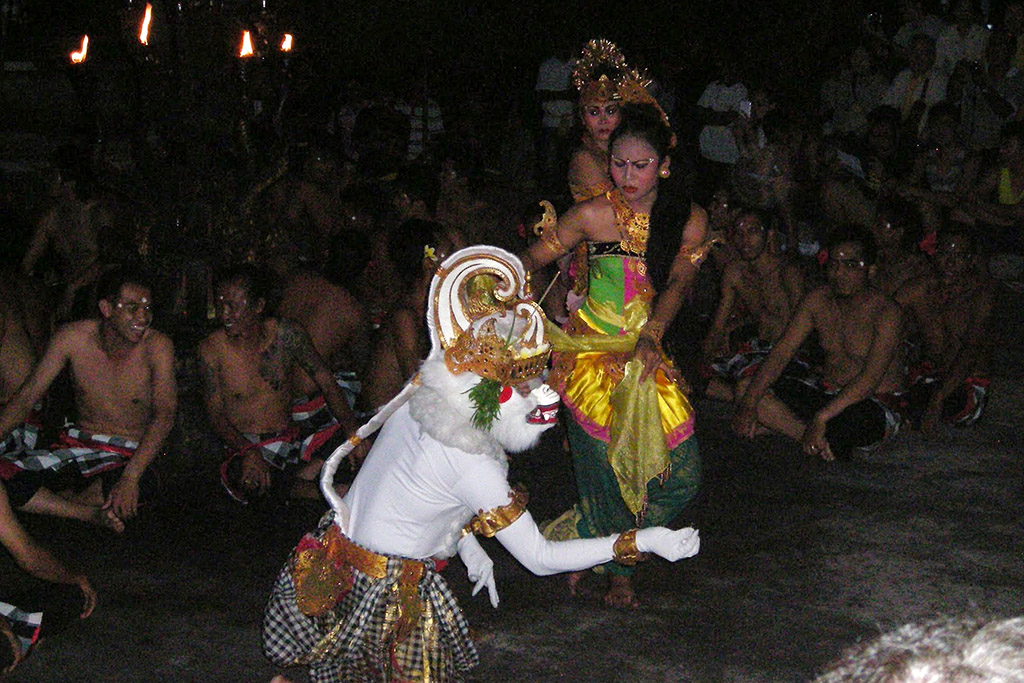
Another well-known artist was the Dutch painter Rudolf Bonnet. Paintings by Bonnet and Spies are on display in Ubud at the Agung Rai and Puri Lukisan museums. Also, you can learn more about Spies in my post on Kecak – a German Dance in Bali.
Years ago, Ubud used to be rather popular with backpackers who stayed in small hostels and guest houses. Over the past years, more and more big, luxurious hotel complexes are being built for wealthier package holidaymakers.
Rest in Peace…and in Style
It feels a bit weird to claim that I was lucky to have attended a cremation during my stay in Ubud. Will say, I was lucky that someone had died?
Oh come on, you know what I mean!
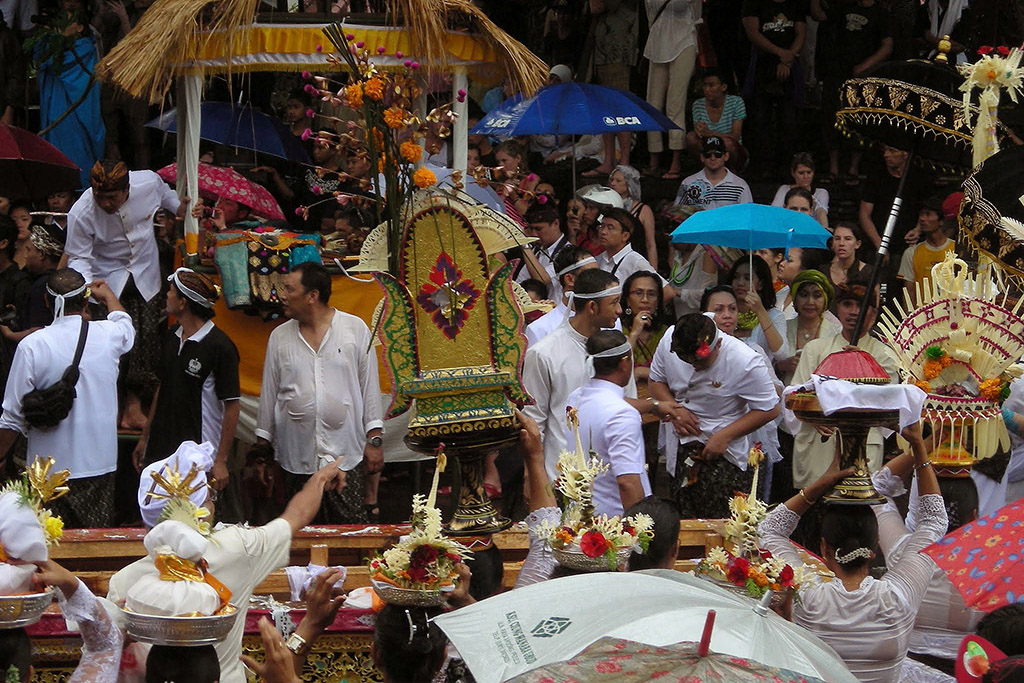
Anyway, so during my first stay in Bali, I arrived in Ubud only to learn, that the very next day, a major cremation would take place.
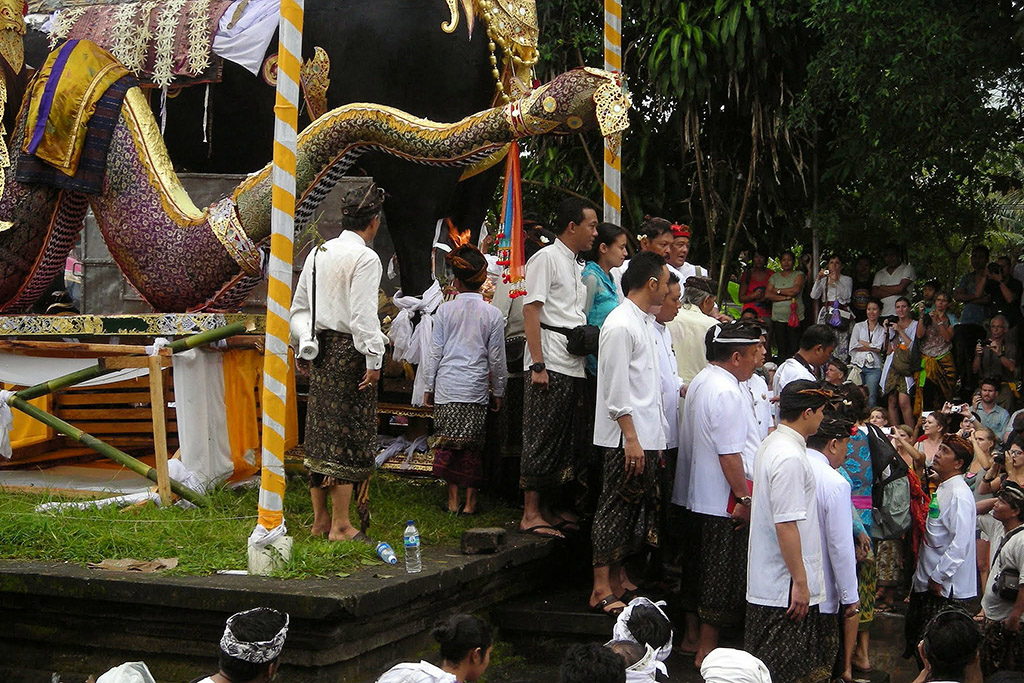
There were huge crowds everywhere. Locals were dressed in traditional attires whose meaning I could not read, obviously. Nevertheless, they all looked very solemn and festive.
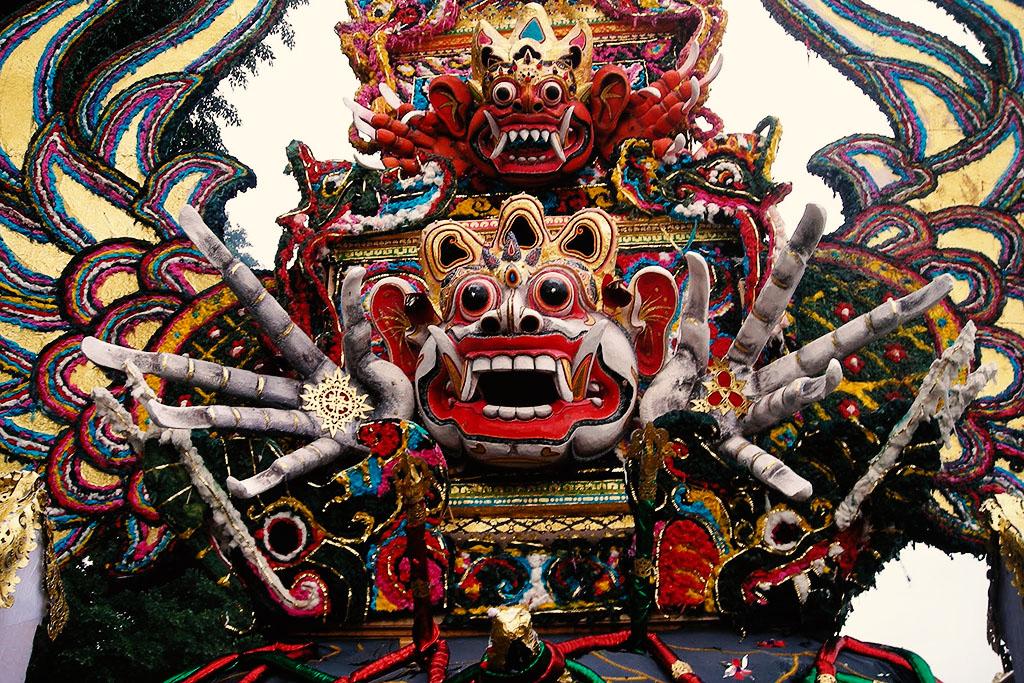
Hundreds of men were carrying some enormous figurines such as a 22-meter tall cremation tower and a five-meter long Naga Banda dragon. It was quite an impressive brouhaha. Massive crowds of locals, as well as tourists, were awing at the absolutely mesmerizing spectacle.
Time to Say Goodbye
During this pelebon, hence the royal cremation, Ubud’s royal family bid farewell to Tjokorda Ngurah Wim Sukawati, Indonesia’s former Ambassador to Switzerland and son of Ubud’s late King Tjokorda Gde Raka Sukawati.

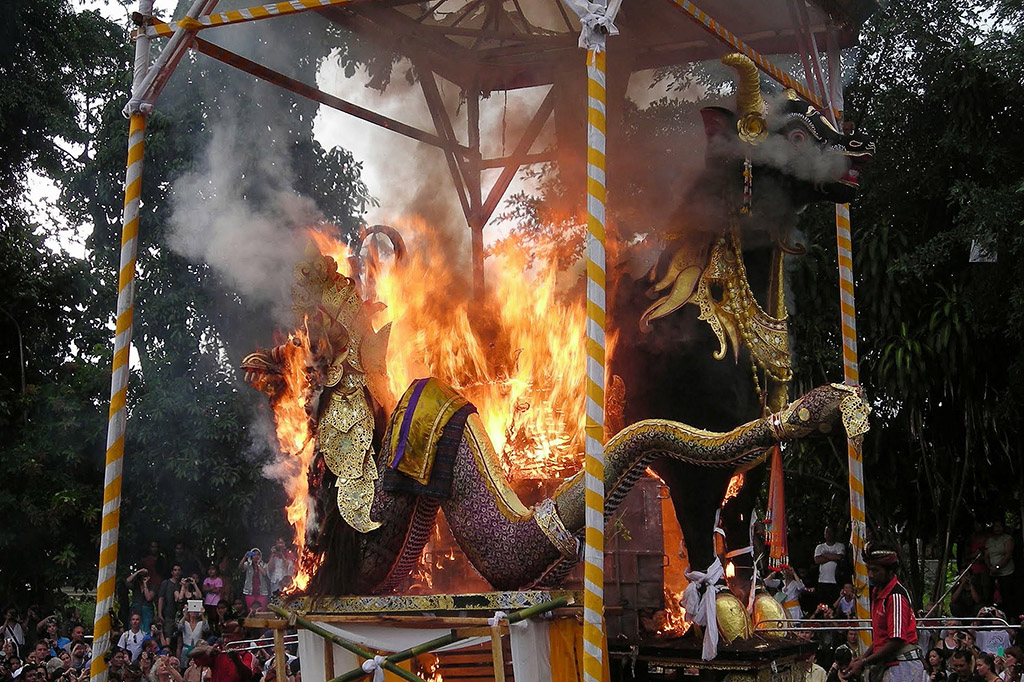
Tjokorda Ngurah Wim Sukawati rested in a five-meter-tall sarcophagus in the shape of a bull that after many ceremonious activities were set on fire. Despite the heavy rain that set in just in time to soak the spectators through and through.
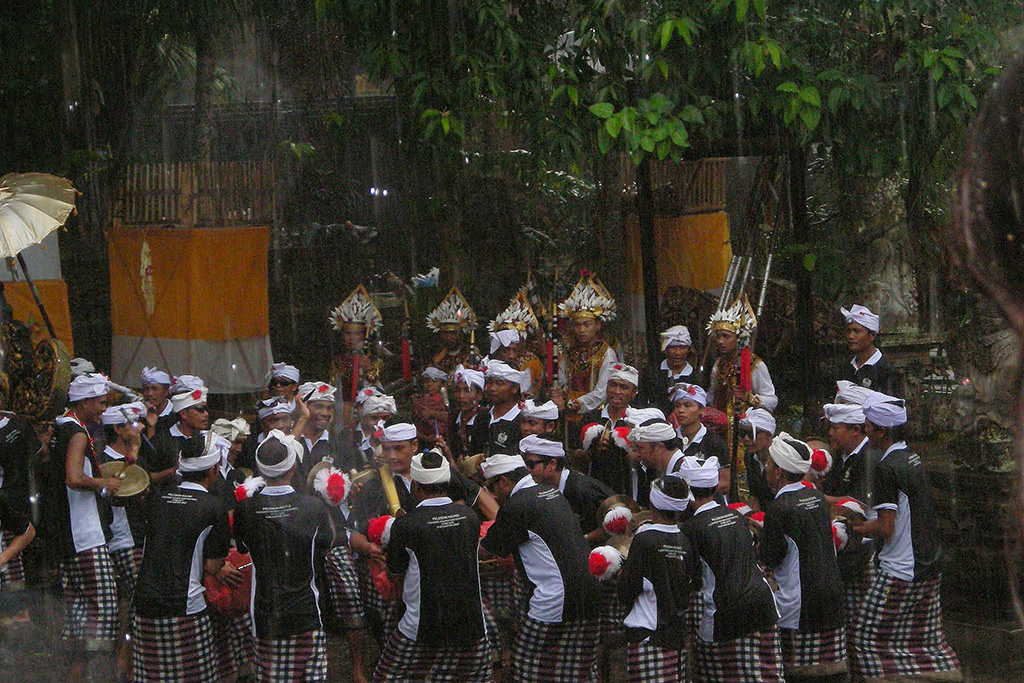
At some point, the local fire brigade had moved in to keep the fire at bay. Sadly, at some given moment, the hose unfastened from the tank so that the water splashed uncontrolled major parts of the crowds instead of the raging flames on the small wooden stage.
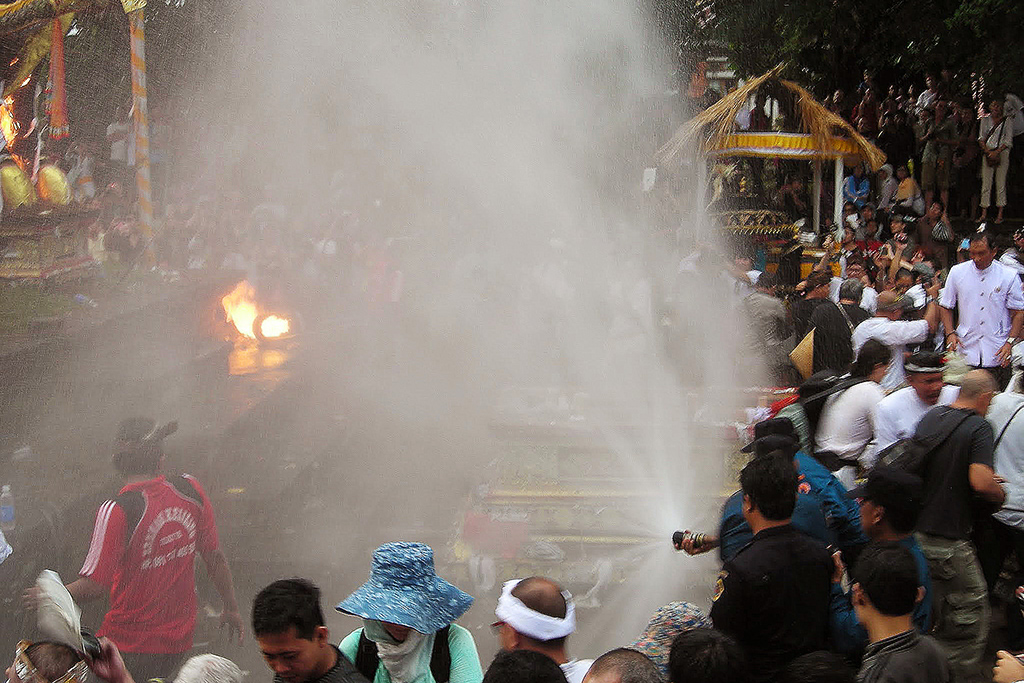
It was hilarious and nobody got hurt and I didn’t allow myself to imagine what had happened if those guys were about to put out a fire at someone’s home.
What to See in Ubud
Not every visitor will be lucky enough that someone dies just before he or she gets to Ubud. Hence, you have to spend your leisure time differently. And there is a lot to see – in the town and its periphery.
Ubud is famous for many different things – the rice paddies, the art galleries, the Legong dances at night, and much more. Although it’s obviously not located on the coast, you can spend relaxing hours in lounge chairs next to some spectacular hotel pools.
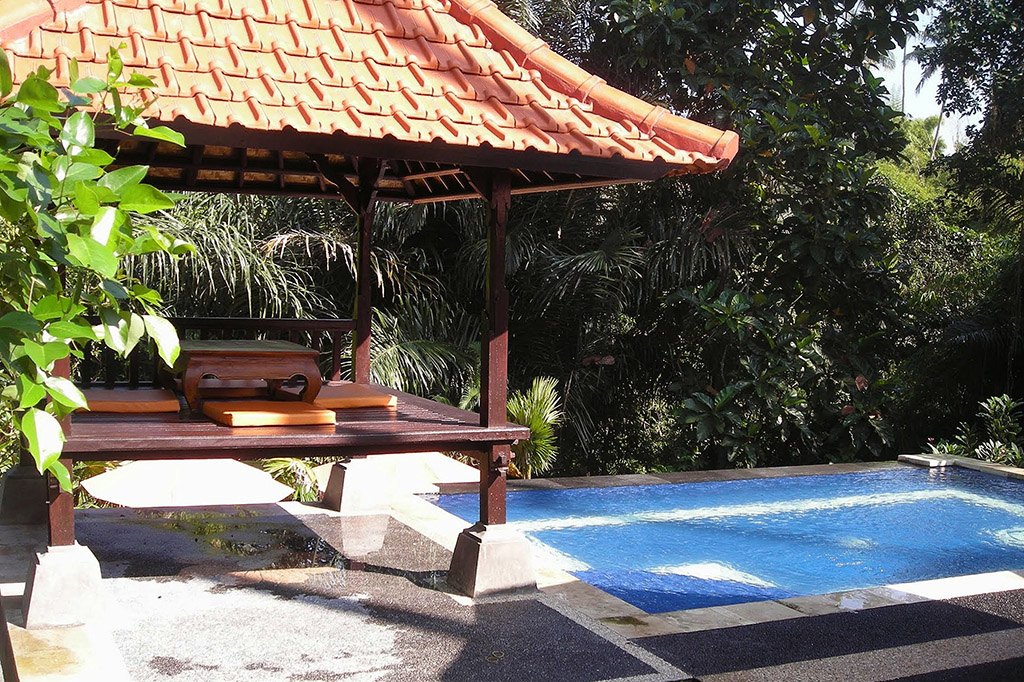
People cycling alongside the rice paddies is photographers’ favorite. And while I must admit that in the pictures, it looks very scenic, I personally did refrain from this activity for two reasons.
Firstly, Bali isn’t flat; it’s actually pretty hilly. Hence, cycling up and down hills in the tropical heat is not that inviting. But more importantly, behind the wheel, these mellow people morph into ruthless maniacs. I certainly don’t want to share the road with these lunatics. Actually yes, I do prefer sitting in their car, clenching my fists till my knuckles are lily-white.
Padangtegal Mandala Wisata Wanara Wana or in short: The Monkey Forest
Ubud’s monkey forest is a small park with the Hindu temple Pura Dalem Agung Padangtegal.
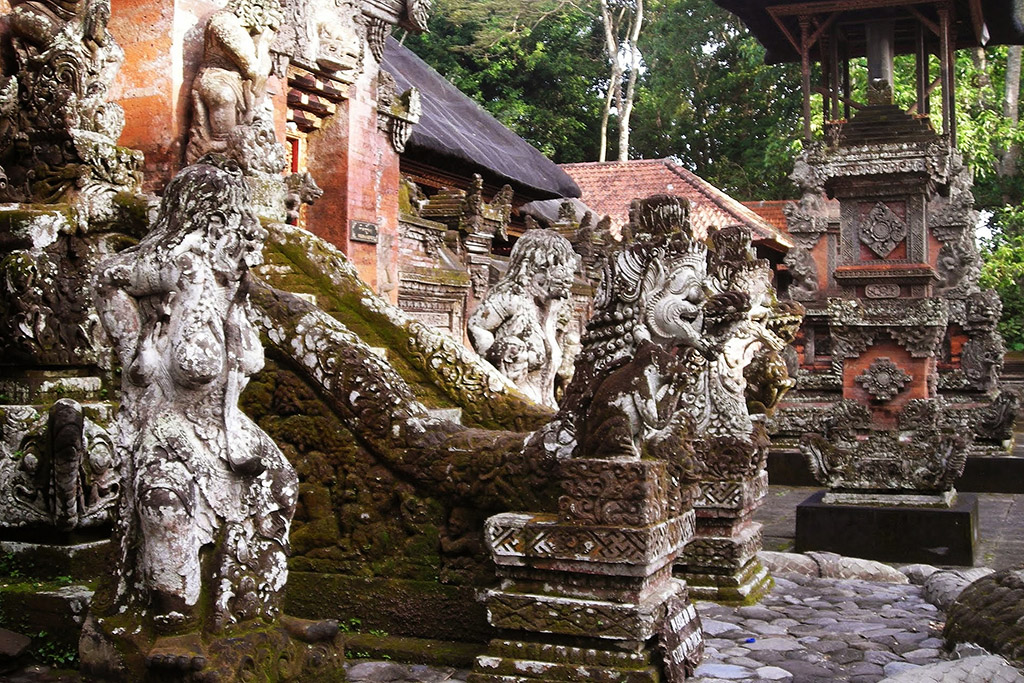
The park is located on the southern border of town not far from the Perama bus station.
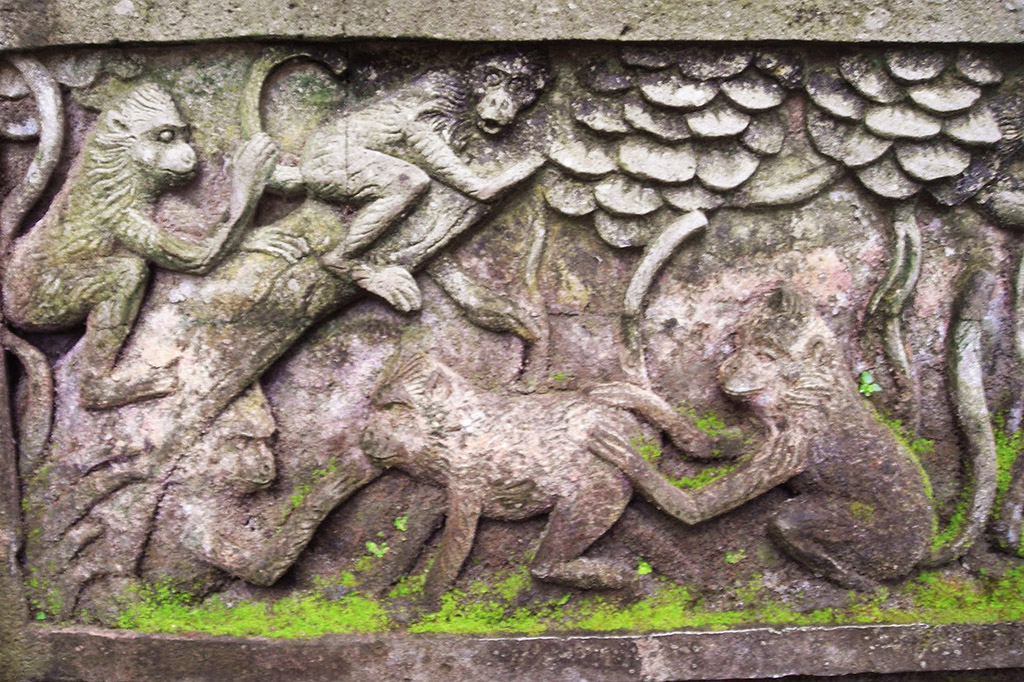
There are about 115 species of trees – but, obviously, not many care. Since the main attraction is the monkeys. It’s called monkey forest and not tree forest for a reason.
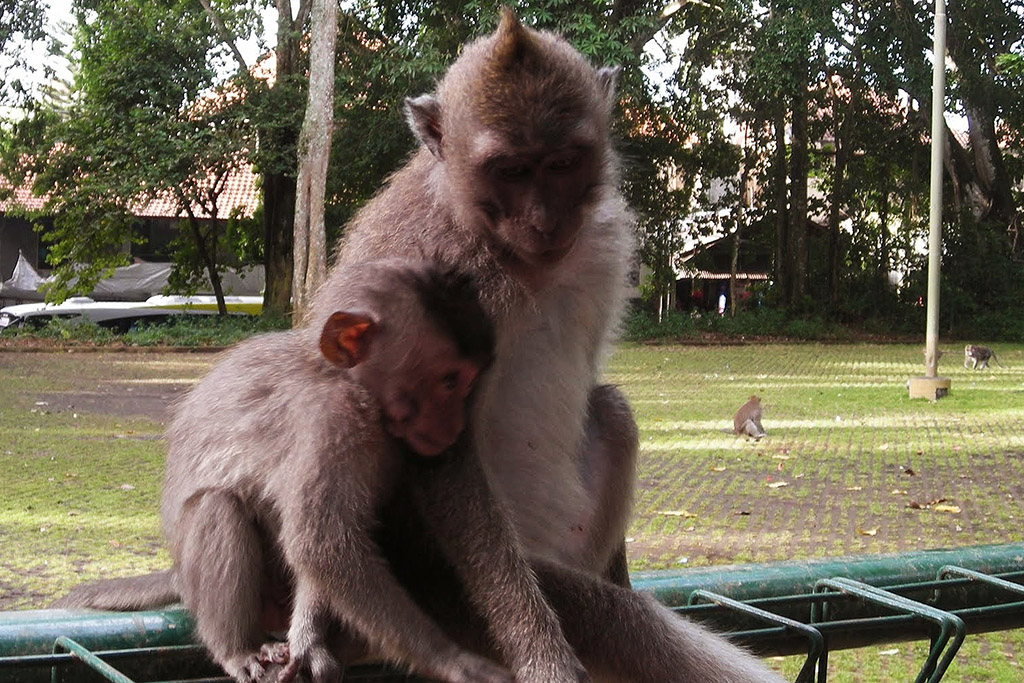
Apart from the so-called crab monkeys, a kind of macaques, there is a holy spring and temple the deceased are ceremonially cremated.
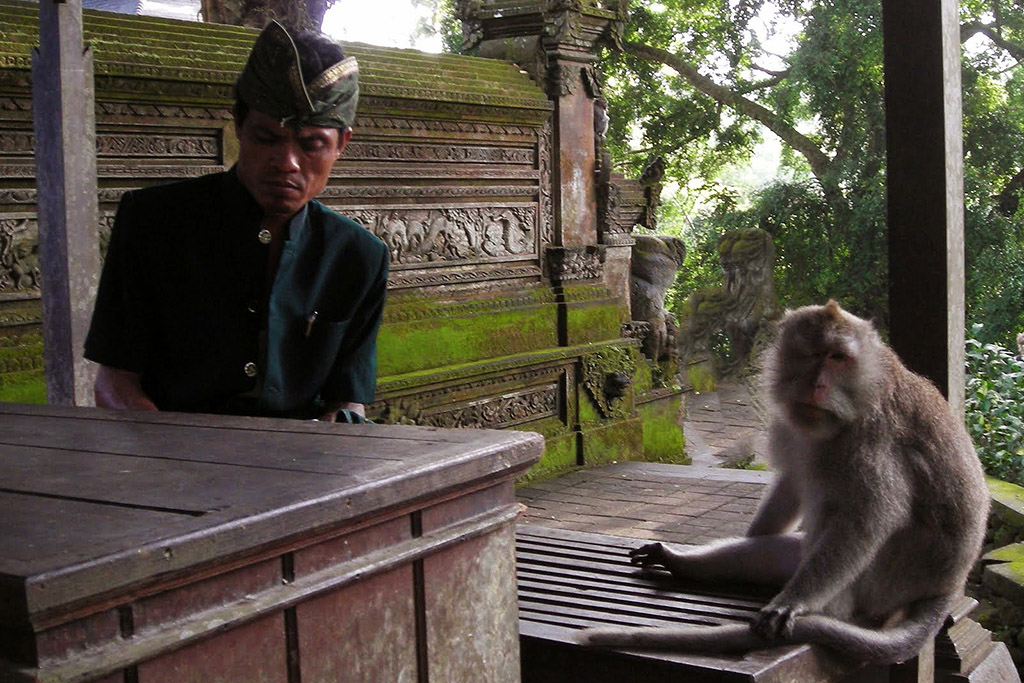
The forest park is open daily from 9 a. m. to 4 p. m. and the entrance fee is 80,000 IDR. You can purchase food – for the animals – at the entrance. However, be oughta be quite careful around the monkeys. They are no pets but wild animals. Seeing people cuddling them or putting them on their shoulders gives me the creeps. Watching them picking lice from each other might give you an idea of what’s going on in their fur, doesn’t it?!
Also, when was your last rabies shot?
Agung Rai Museum of Art
The Agung Rai Museum of Art – or short ARMA – is an art museum on Ubud’s outward road that opened in 1996.
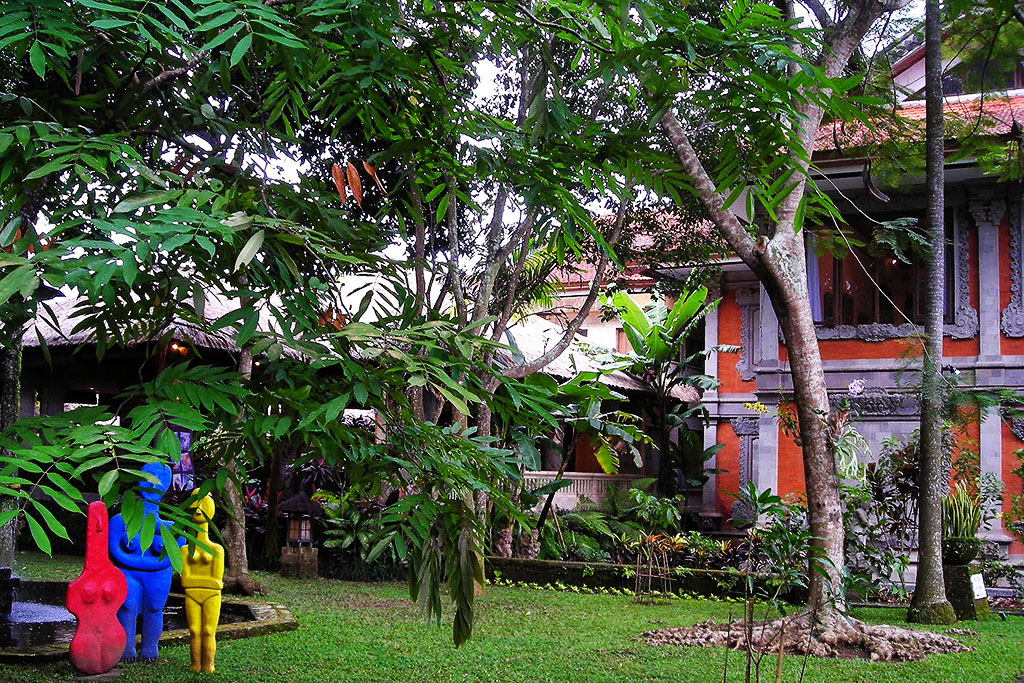
The permanent collections consist of paintings by local and international artists who have lived in Bali. The styles range from Kamasan masterpieces, works by Raden Saleh, the founder of modern Indonesian painting, to contemporary art. Some of the pictures are in possession of the ARMA Foundation while others were loans by Agung Rai’s personal collection.
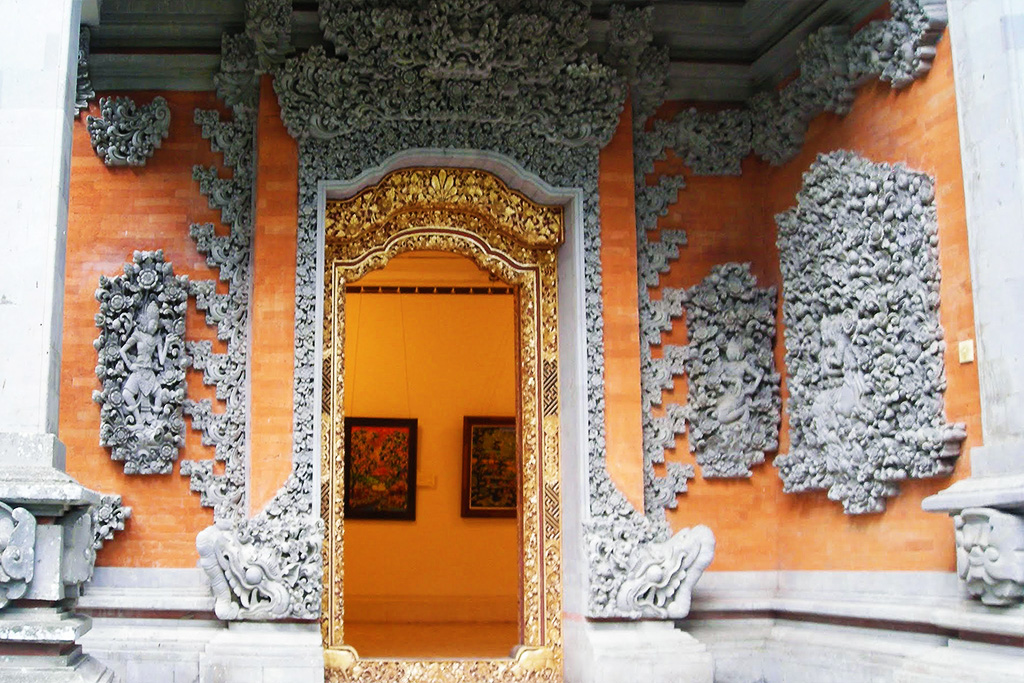
Agung Rai is an internationally renowned Balinese art dealer who opened his first gallery in 1978.
The museum consists of several Balinese buildings constructed from local building materials. They are surrounded by lush gardens with ponds and fountains.
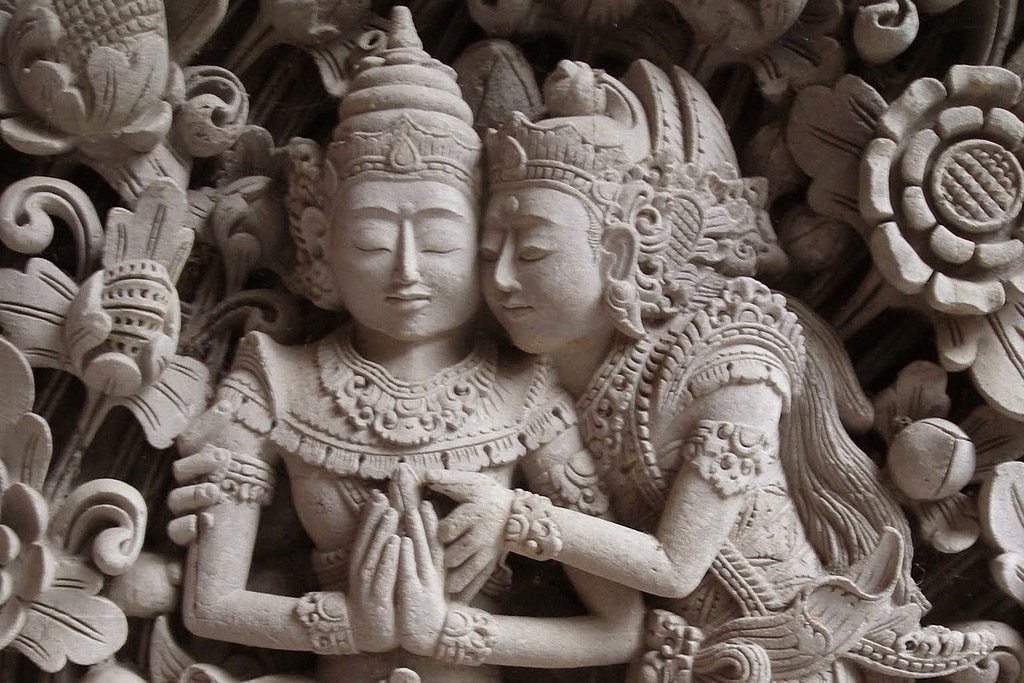
Onsite are also the Hotel Arma Resort* and two restaurants.
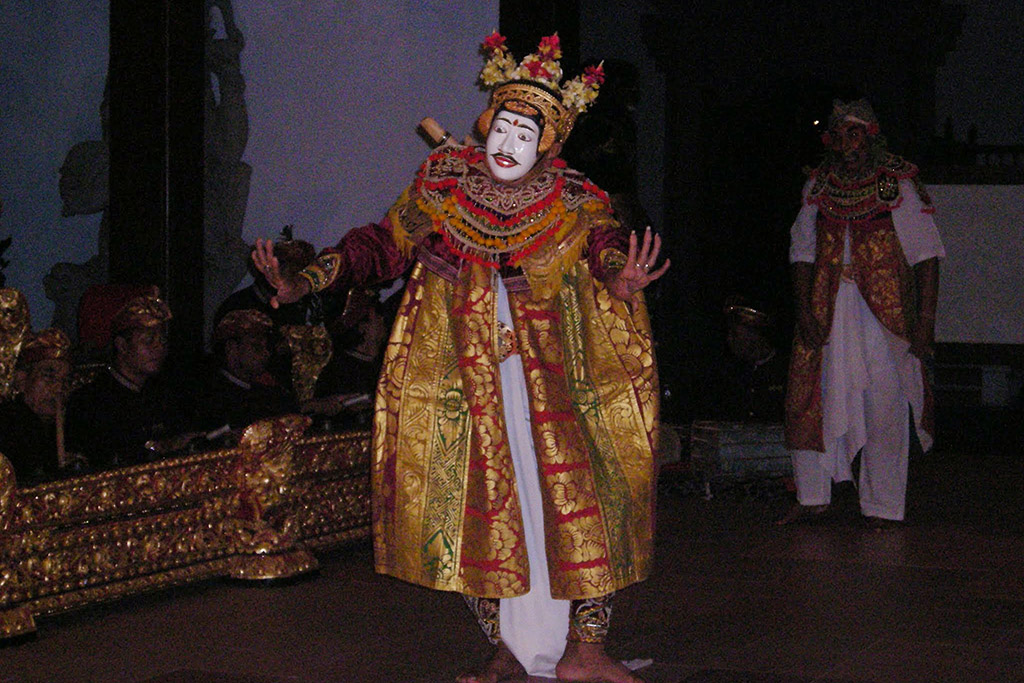
In addition to the galleries, theater and dance performances are taking place at the ARMA.
Arma Museum & Resort*
Open every day from 9 a. m. till 6 p. m. The admission fee is 80,000 IDR and includes a complimentary coffee or tea to enjoy at the ARMA Café.
Neka Art Museum
Another art gallery worth visiting is the Neka Art Museum about three kilometers north of Ubud’s center. It was founded by Balinese teacher and art collector Pande Wayan Suteja Neka in 1982.
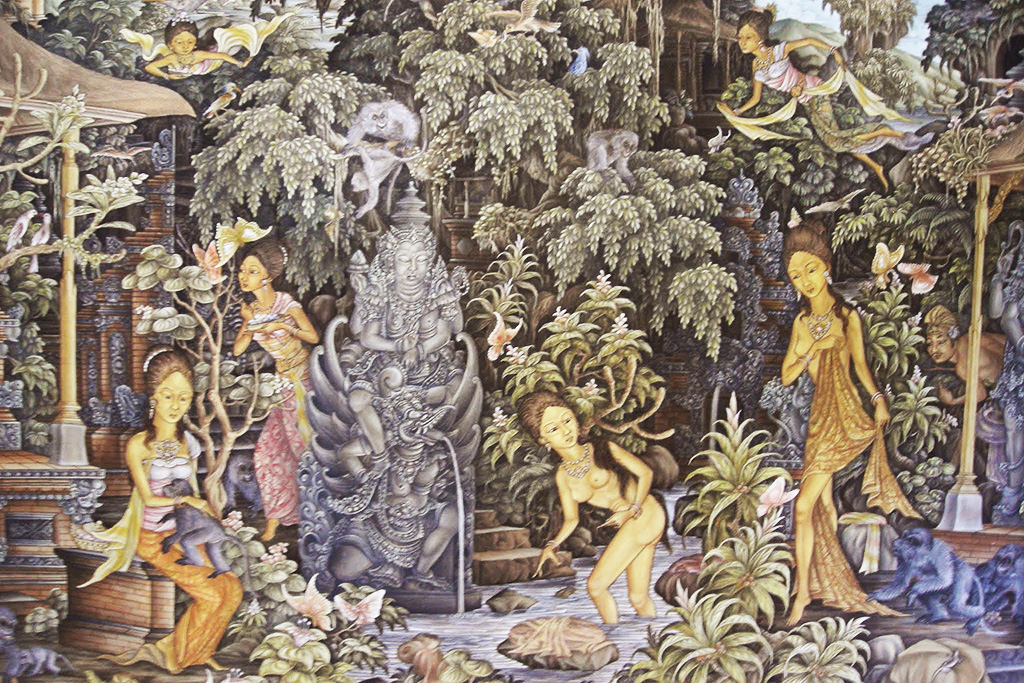
In 1966, Neka, who was the son of a famous local woodcarver, opened a small shop with high-quality paintings. To document and preserve Balinisian art, he started collecting local works.
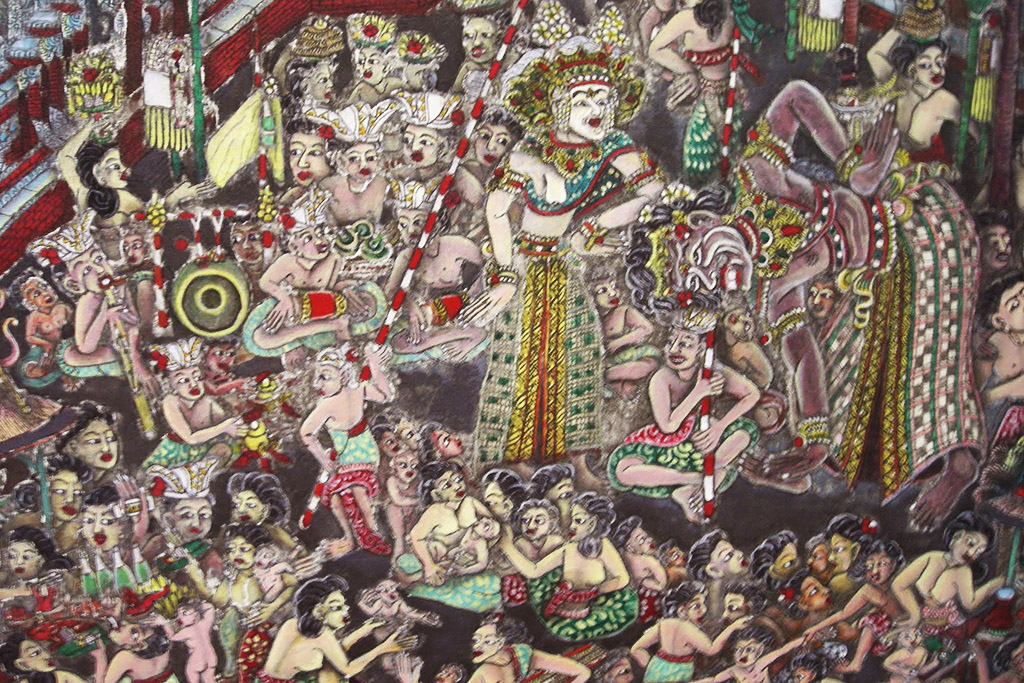
Then, in 1975, during his international travels with Dutch ex-pat and artist Rudolf Bonnet, Neka discovered Balinese art unseen in Indonesia. After his return, he decided to establish an art gallery.
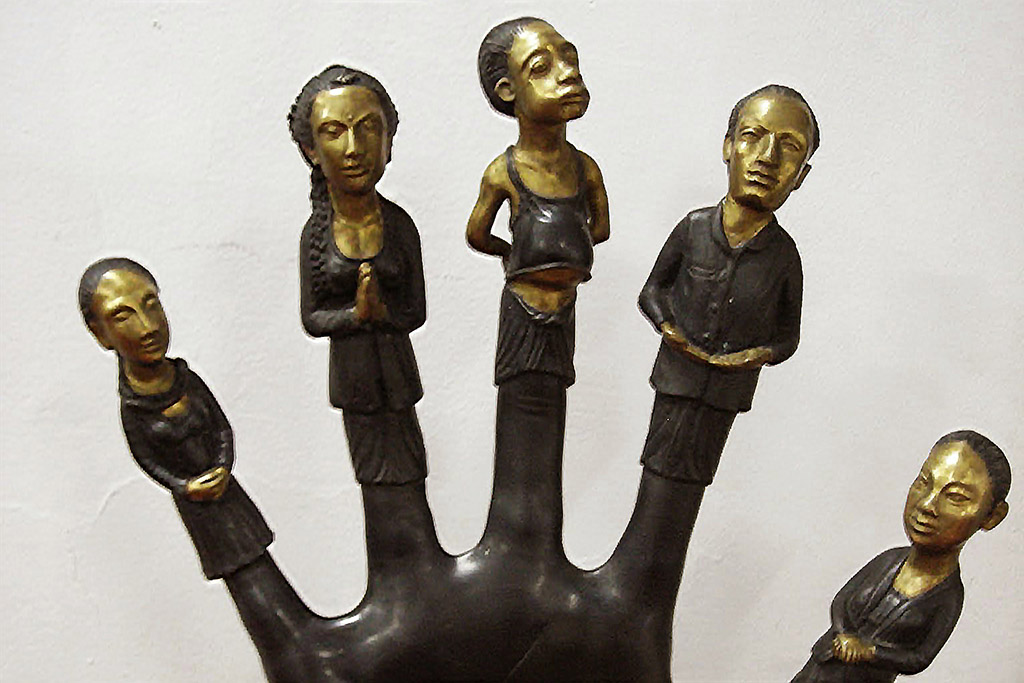
Each finger has some meaning as a social symbol: The thumb is the mother and stands for protection, and shelter. The index finger is the father and symbolizes wisdom and leadership. The middle finger is a pot-bellied man incarnating selfishness and arrogance. The ring finger symbolizes a bride’s faith and devotion. Finally, the little finger stands for the innocence, sweetness, and affection of a child. According to the artist, every person has all of these characteristics – metaphorically, in their hand. In their togetherness, they create unity and make a person complete.
Hence, this art museum shows the traditional architecture of a Balinese compound, hence separate buildings serving different purposes.
You get to see classical Indonesian paintings as well as contemporary local art.
The Neka Art Museum is open every day from 9 a.m. till 5 p.m., Sundays noon to 5 p.m. The admission fee is 75,000 IDR.
Blanco Renaissance Museum
On the way from downtown up to the Neka Art Museum, you’ll pass the Blanco Renaissance Museum. Big words for a rather mediocre venue.
Antonio Blanco was born in Manila to Spanish parents. Apparently, due to this, Blanco thought of himself as being linked to Miró and Salvador Dalí geographically and spiritually. What a bold and pretentious statement!
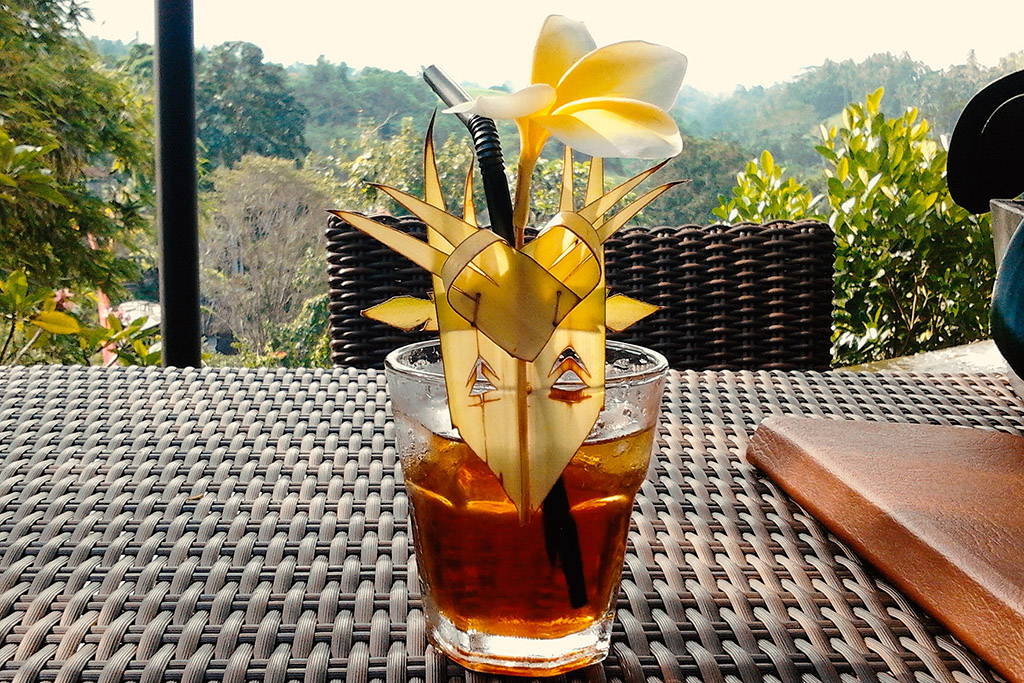
Having seen Blanco’s work I can assure you that this is one of those cases where westerners who are small fish in a big pond in Europe or the US, suddenly have the opportunity to become big fish in a small pond when coming to remote places. Never ever would Blanco have made it as an artist in Paris, Berlin, or New York. So, after having traveled around, he finally settled in Bali in 1952.
The King of Ubud gave Blanco a piece of land to set up his home and studio. It lies idyllically at the confluence of two rivers from where you have grand views of Ubud’s sceneries.
That’s the only reason to visit this place.
Blanco Renaissance Museum
Open every day from 9 a.m. till 5 p.m. The admission fee is 80,000 IDR. The beautifully decorated welcome drink is complimentary.
Pura Taman Saraswathi
One of Ubud’s most important buildings is Pura Taman Saraswathi. It was built in the 1950s and is dedicated to the Hindu goddess Sri Saraswathi. The most beautiful feature of the complex is a lotus pond and water garden.
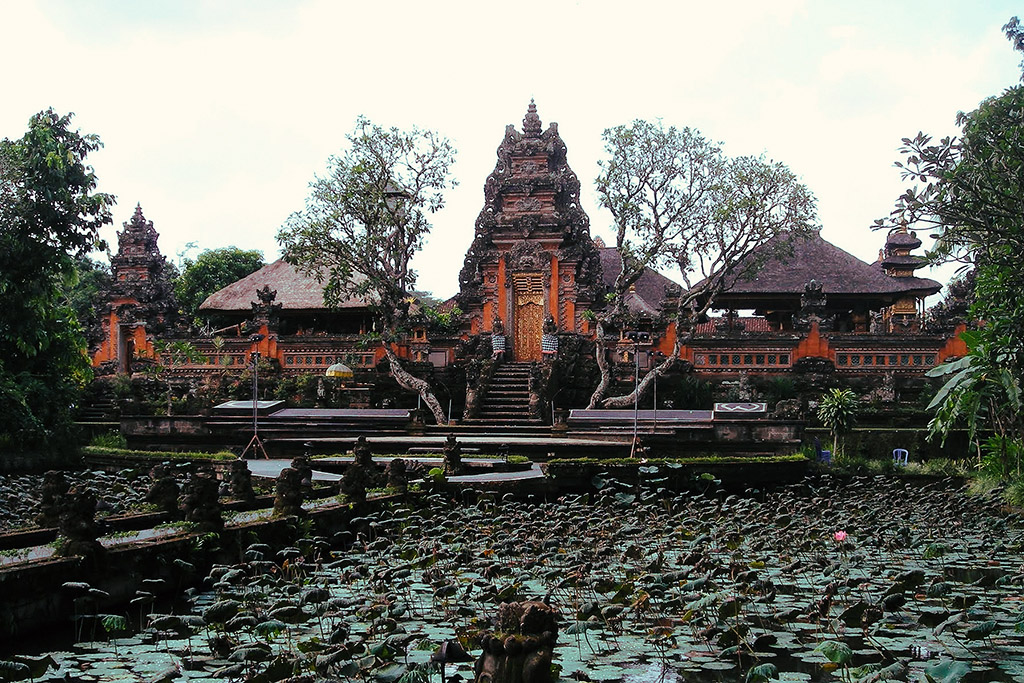
Theoretically, the temple can be visited free of charge between 7 a. m. and 7 p. m. In reality, it is closed most of the time.
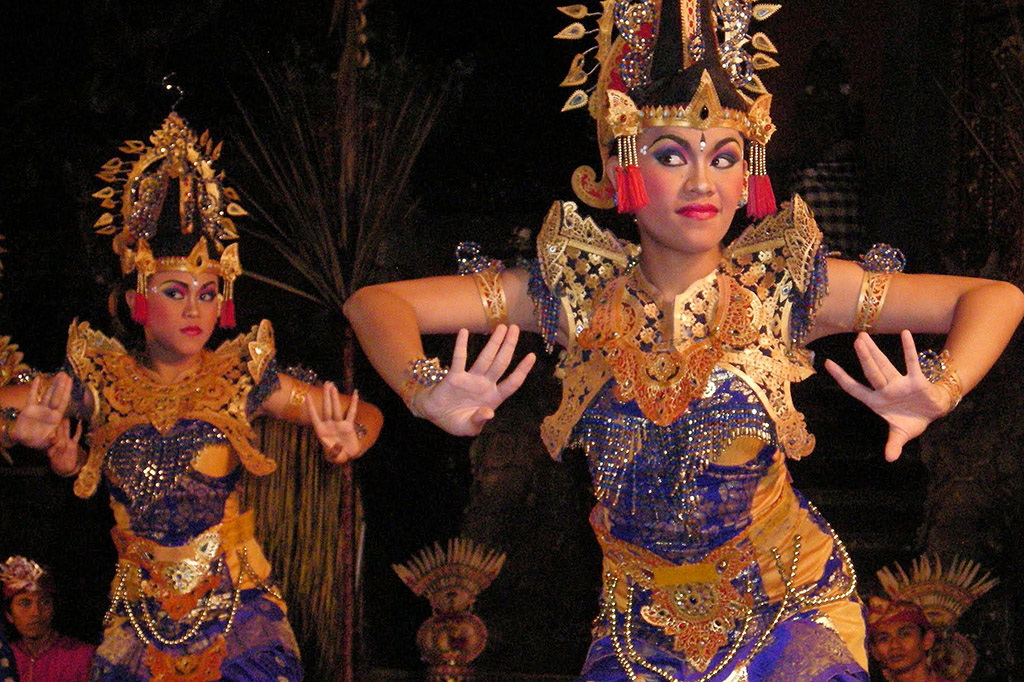
Nevertheless, in the evening at 7.30, you can see legong performances for a fee of 80,000 IDR.
Legong
When travelling, I love to attend folkloristic spectacles – due to the language barrier preferably dance shows: In Kandy on the island of Sri Lanka, I saw a dance show, in Chiang Mai in Thailand it even came with a traditional dinner and on my road trip through Japan I spent A Night at the Kagura in Hiroshima.
If you feel like it, you can visit a different Legong performance in Ubud every evening. In addition to the Legong performance at the AMRA, episodes from the Ramayana and Mahabharata are also shown in temples and in Ubud’s royal palace Puri Saren Agung. It was the official residence of the royal family.
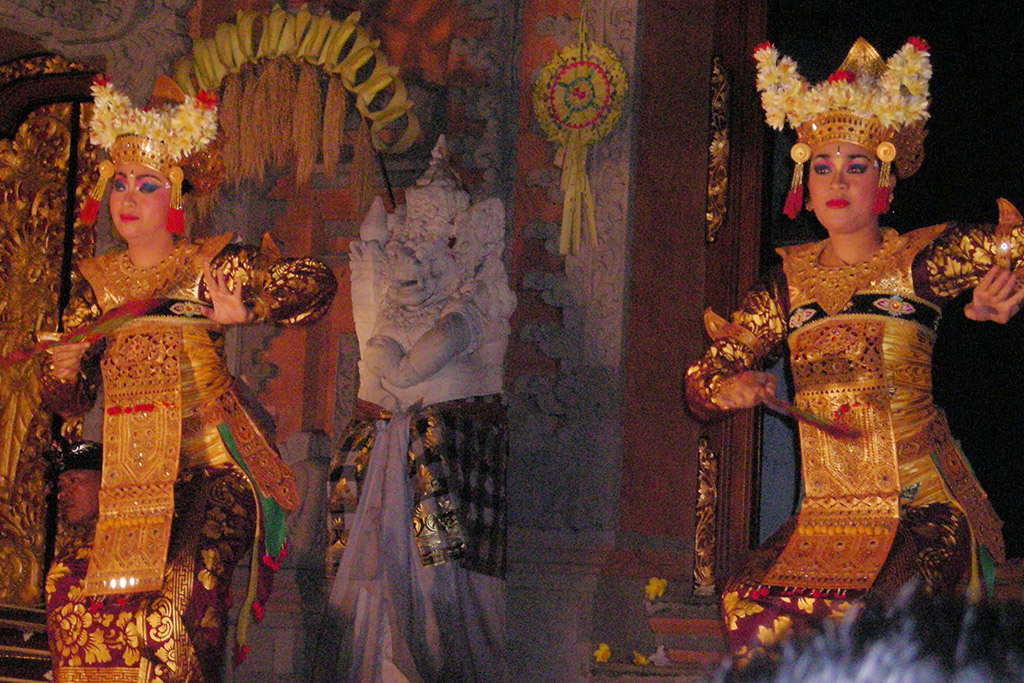
Legong is a dance that originates at the beginning of the 20th century. It is performed for pure entertainment.
Depending on the story, the ensemble consists of two to five dancers. These dancers are wearing thoroughly elaborated costumes made of tightly wrapped brocade. They are wearing very flashy make-up and lavishly adorned headpieces. A Gamelan Pelegongan orchestra accompanies and accentuates the performance.
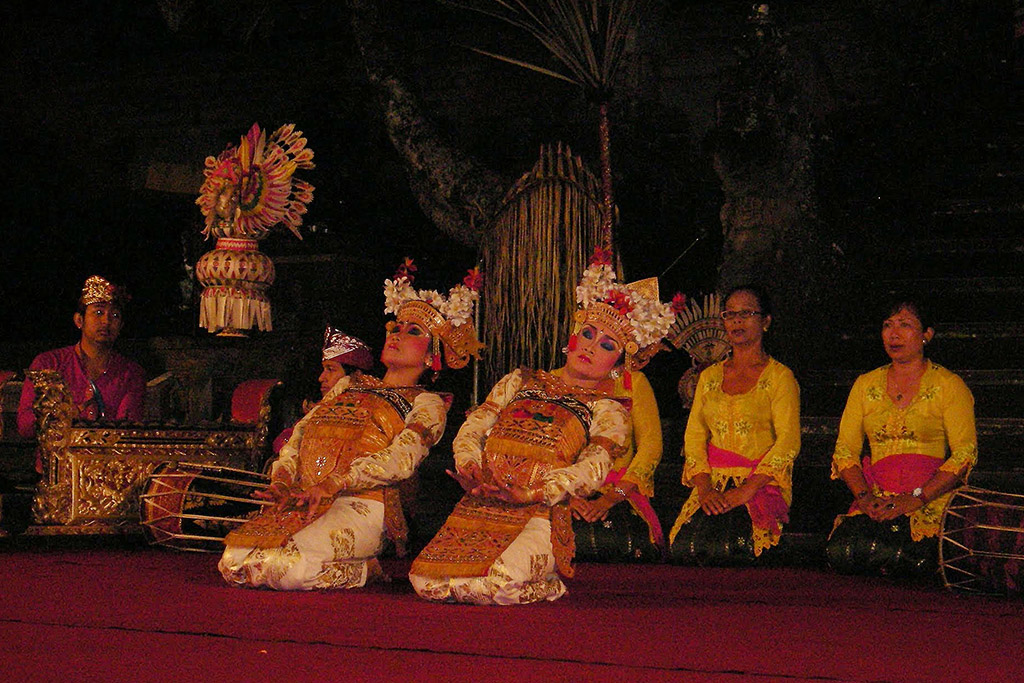
It’s fascinating how the smallest nuances of facial expressions and gestures underline the narrative and intensify the drama.
As you walk Ubud’s main streets in the late afternoon, ticket sellers will address you right there. I was a bit irritated at first to buy tickets for 80,000 IDR from random people with no proof of legitimation. However, everything was totally legit.
Out of Ubud
As I keep complaining about Bali neglecting solo travellers, I can proudly announce that Ubud was the only place where booking organized group activities and tours was actually possible.
Together with three other visitors, I went on a wonderful day trip by van. In any other country, the landmarks we got to see could have been visited individually for instance cycling. As I explained above, due to Bali’s merciless drivers, I didn’t dare to ride a bicycle in any of the places I visited. It might be different for motorbikes but cycling – no way!
Goa Gajah
Our tour began only a few kilometers southeast of Ubud near the town of Bedulu. There, we got to visit Goa Gajah, a syncretic temple that comprises Buddhist and Hindu elements. Supposedly, it was a Buddhist center in the 8th century. Monks once used this cave as an ascetic retreat for meditation.
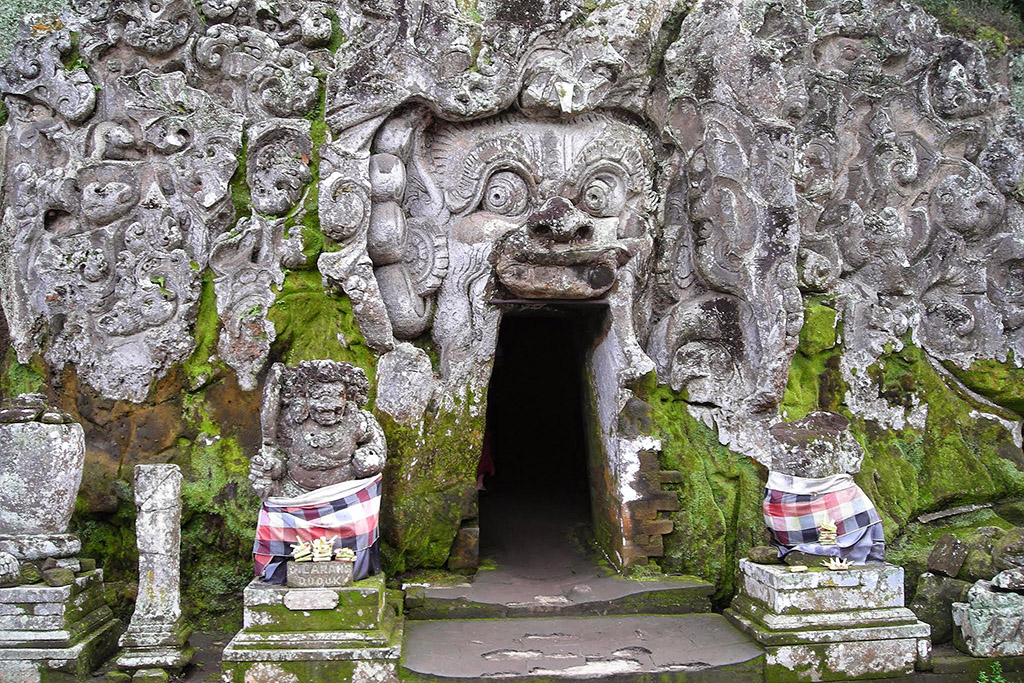
Above the entrance, a big monster lets you enter the cave through his mouth. Inside, the grotto is much less spectacular than expected. A Ganesha statue thrones in a niche in the left cross corridor. On the right side, a triple linga symbolizes the Hindu trinity Brahma-Vishnu-Shiva.
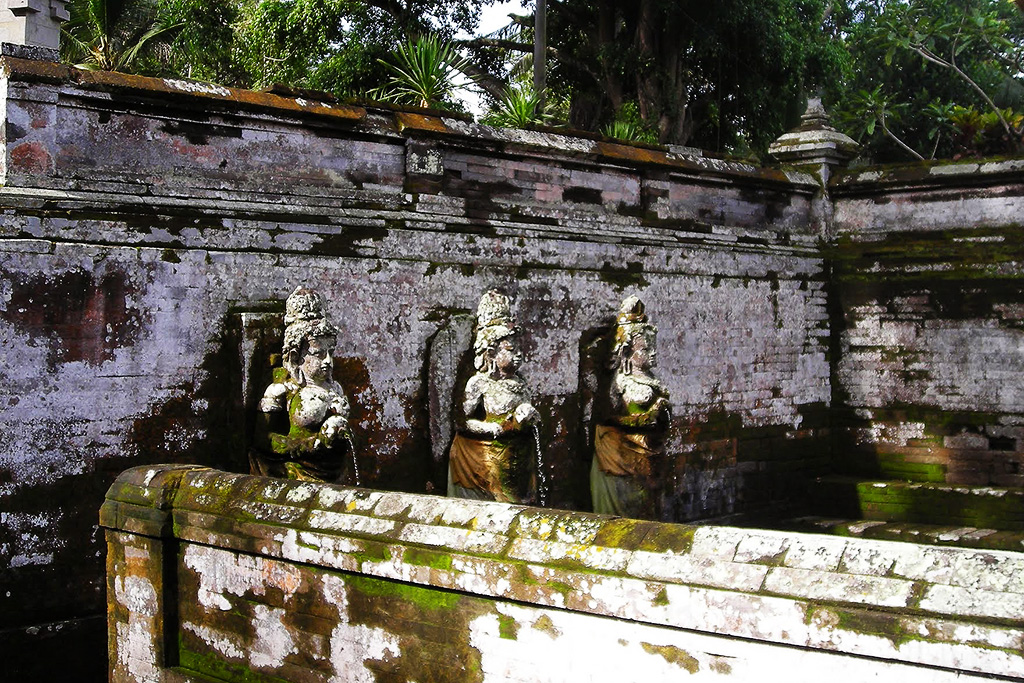
Goa Gajah’s water basin was excavated only in 1954. On its western side are six nymphs holding jugs from which water gushes into the basin.
Pura Tirta Empul
The Tirta Empul Temple is located near the town of Tampaksiring. Pura Tirta Empula was installed around a large water source in 962.
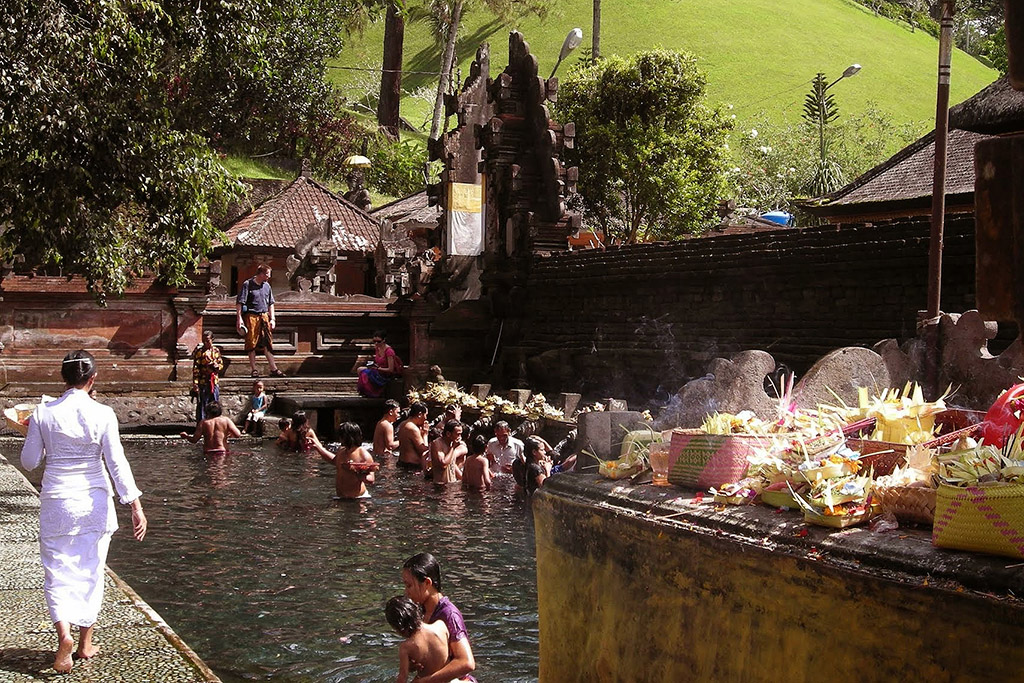
The complex includes various basins and fountains with sacred waters where the Balinese Hindus perform purification rituals. The temple is dedicated to Vishnu.
On top of a hill, close to the temple, a modern villa was built for President Sukarno’s visit in 1954. This villa is still used as accommodation for important guests.
I still wonder why I didn’t stay there.
Pura Panataran Agung Besakih
Pura Besakih is the mother temple of all Balinese temples and even the most important Hindu sanctuary in all of Indonesia. The temple was probably founded in the 8th century and is located around 950 meters above sea level on the southwest slope of Gunung Agung, Bali’s still active volcano.
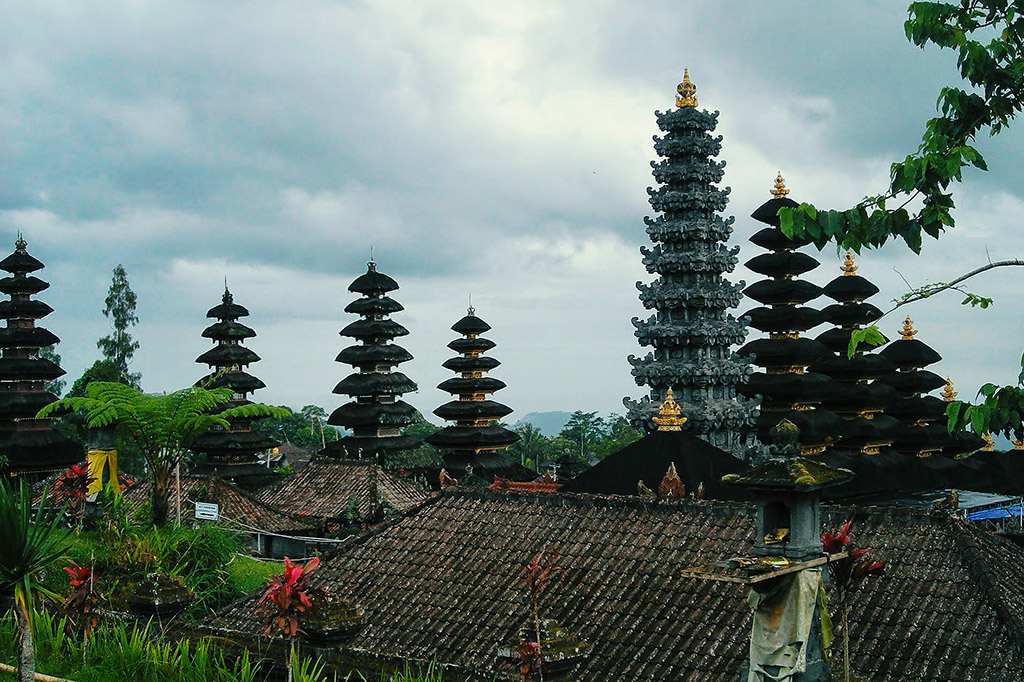
The entire complex consists of over 200 buildings, including multi-level temple towers, shrines, as well as other open and closed buildings.
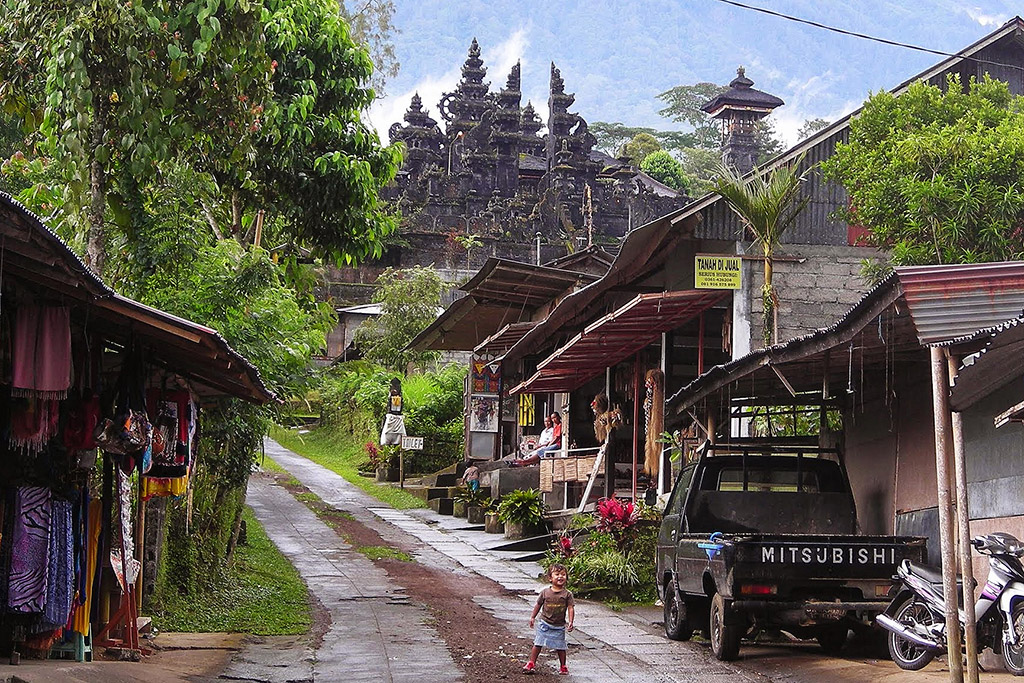
Before our driver send us to explore the complex, he inculcated us the info we had to pay the entrance fee of 60,000 IDR and sign a book, but no further fees would apply. We had to stick to this rule.
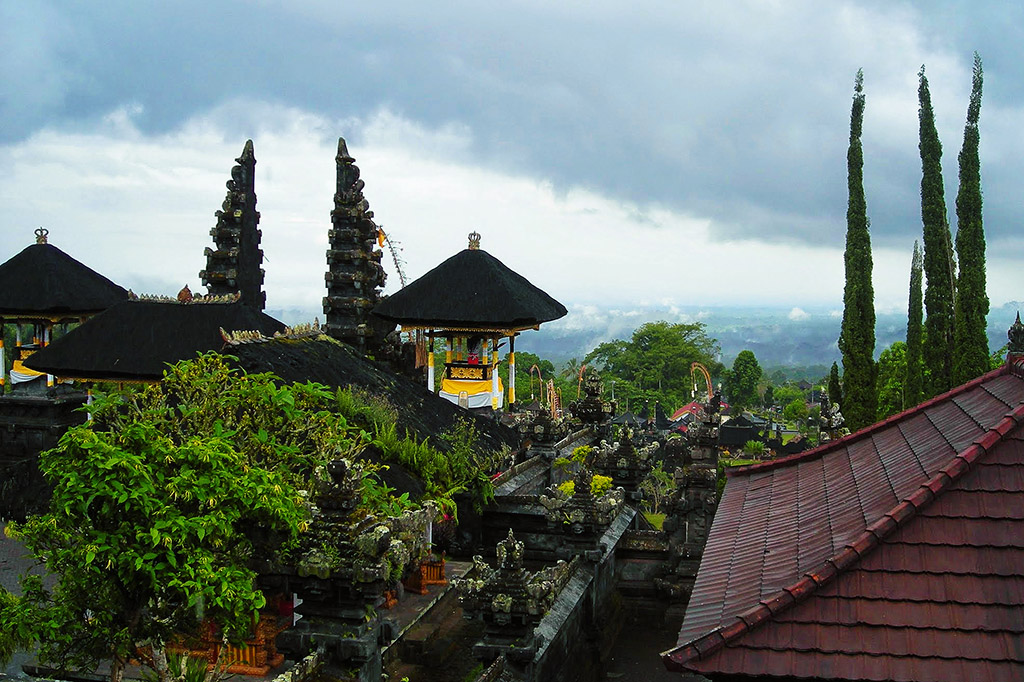
Well, for him, this might be easy since he’s a local. We were four Orang Asing, foreigners. In addition, it was raining. Immediately we were surrounded by potential guides who explained more or less friendly we had to hire a guide. Also, we needed umbrellas. Or rain-skins. Or both. And a guide. Although we resisted and made our way up the stairs, it was something unpleasant. Not only because of the potential guides following and pestering us, but also because of the constant drizzle.
I don’t know if this is normal in Bali, but the entire time I spent in Ubud, it was sunny in the morning, but around noon, clouds came out and by the afternoon, it was drizzling to pouring. Just take that into consideration when planning your day.
Tegallalang Rice Terrace
Next stop was a restaurant above the Tegallalang rice terrace where we enjoyed a good lunch and a spectacular view.
Tegallalang is one of the most beautiful rice terraces in Bali, after all.
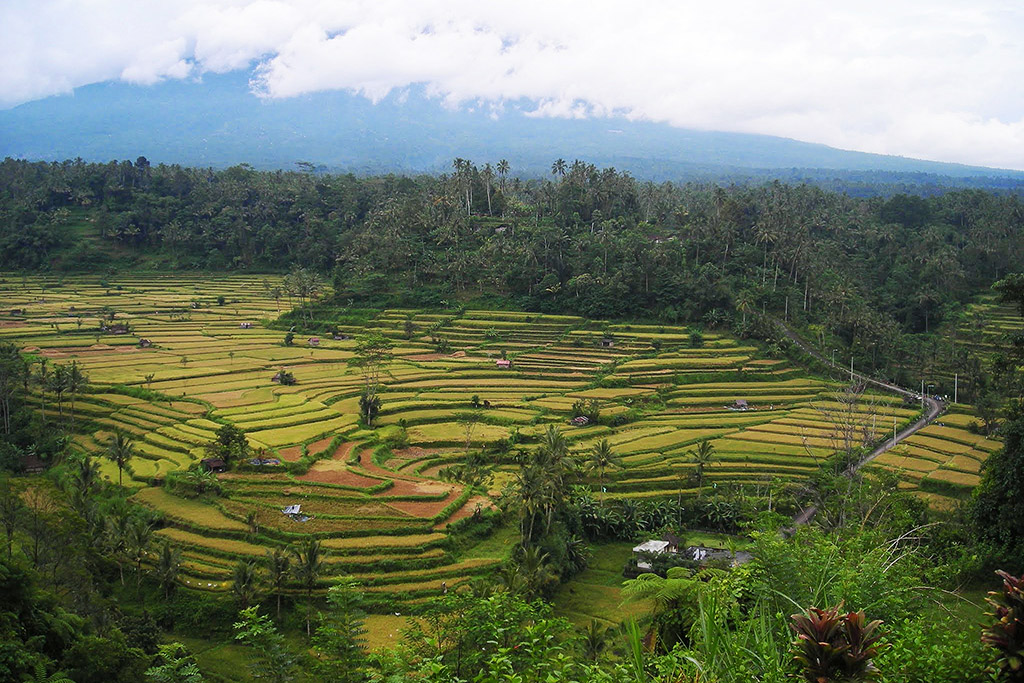
However, the Tegallalang Rice Terrace is no longer an insider tip. It’s actually one of the most popular Instagram spots on the island.
Instagram Can Kill You
Along with Pura Tanah Lot north of Legian Beach, the Gate of Heaven in Karangasem, and the rice terraces, the jungle swing in Bongkasa is the most popular photo spot in Bali. Hence, due to Instagram and all those wannabe-influencers, all these magic places degenerate into overused backdrops and photosets. I’ve written about this terrible phenomenon in my post Most Instagrammable – Till Death Do Us Part.
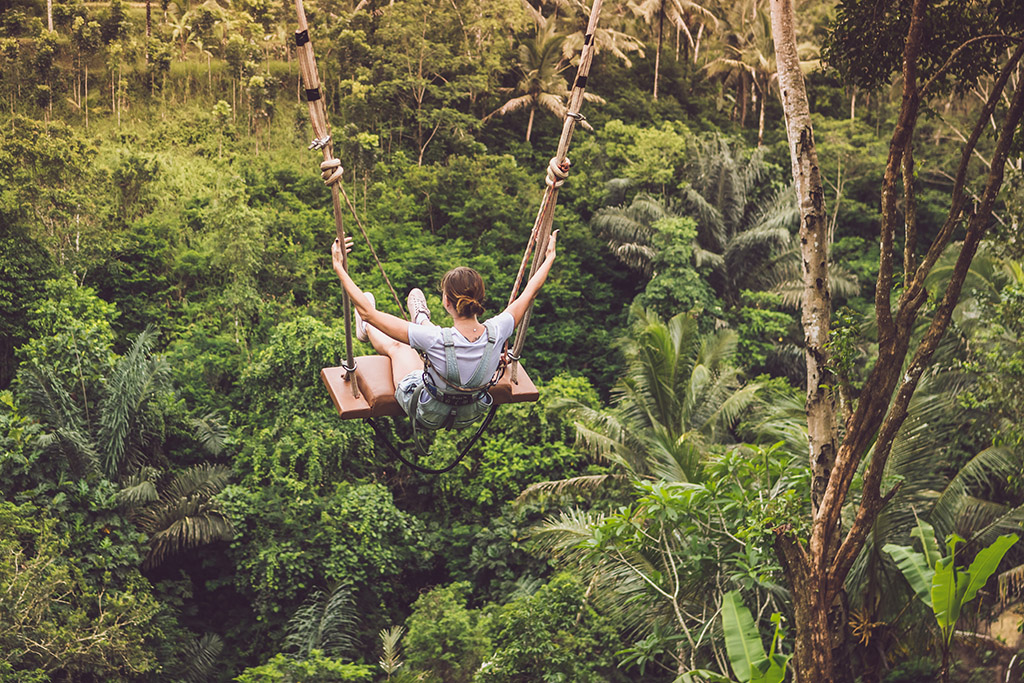
(Photo: Artem Beliaikin from Pexels)
And guess what – death did people part: In 2018, a French tourist fell from a swing 15 meters into Tegallalang Valley and died. The swings got famous through…yes, Instagram and have multiplied mainly in the valley ever since. There are no size or safety standards for those swings.
But hey, no price is too high for many likes on Instagram, right?!
Palace of Klungkung and Kertha Gosa Court
After lunch, we made it to Klungkung in the pouring rain. The name alone is so pretty and sounds like a tune played on one of those exotic Gamelan instruments.
The Kingdom of Klungkung was the largest and most important of the nine kingdoms in Bali between the late 17th and early 20th centuries.
The Palace of Klungkung is a historical building complex built towards the end of the 17th century. It was largely destroyed during the Dutch conquest in 1908 and during colonial times.
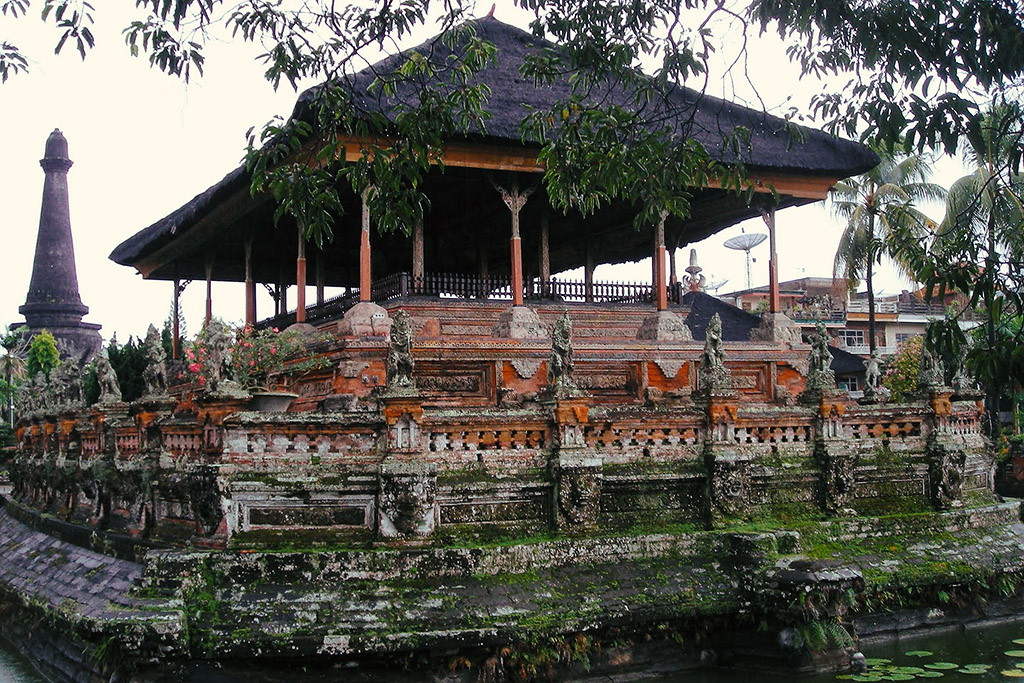
Nevertheless, to this date, the Kertha Gosa Pavilion prevailed. This hall which shows the classic Klungkung architecture and painting technique, was added at the end of the 18th century.
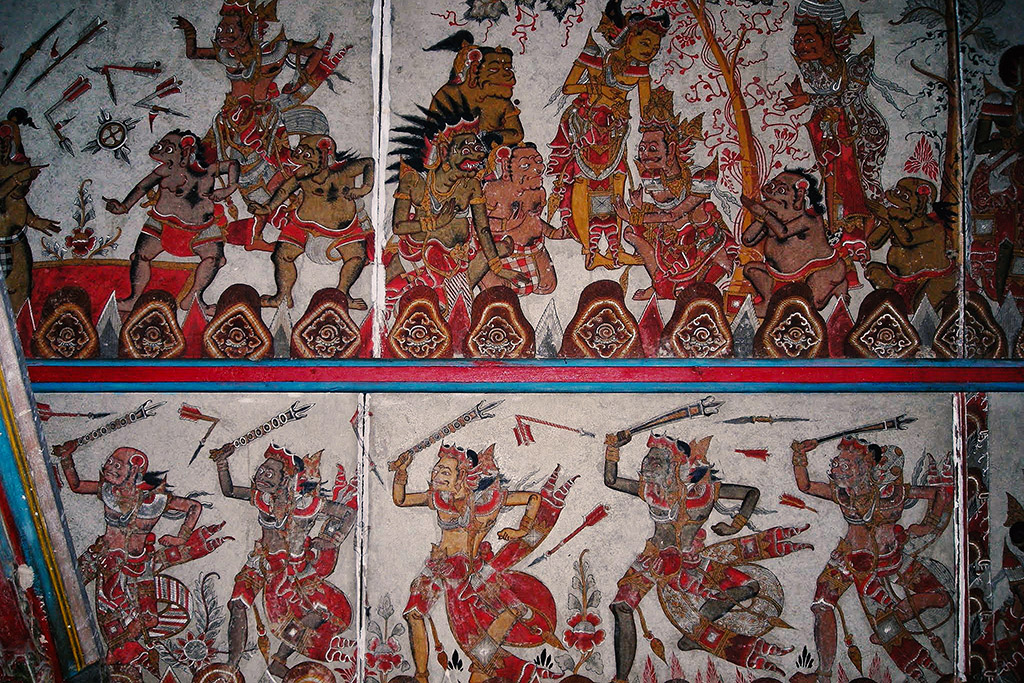
Kerta Gosa was respected as the Supreme Court of Justice in Bali. Legal cases that could not be resolved elsewhere ended up here. Three fierce and harsh Brahmin priests presided over the court. The paintings of the Kerta Gosa Palace are outstanding examples of the Kamasan style. They illustrated for the defendant which punishment to expect.
Luwak Coffee
A visit to a coffee farm is probably on every itinerary. Kopi Luwak, also casually called cat coffee, is originally made from half-digested coffee beans in the excrement of spotted musangs living in the wild.
In 1883, German zoologist Alfred Brehm described how locals collected the wild cats’ excrements to make a drink from it since the plantation coffee was intended exclusively for the Dutch colonialists and their export.
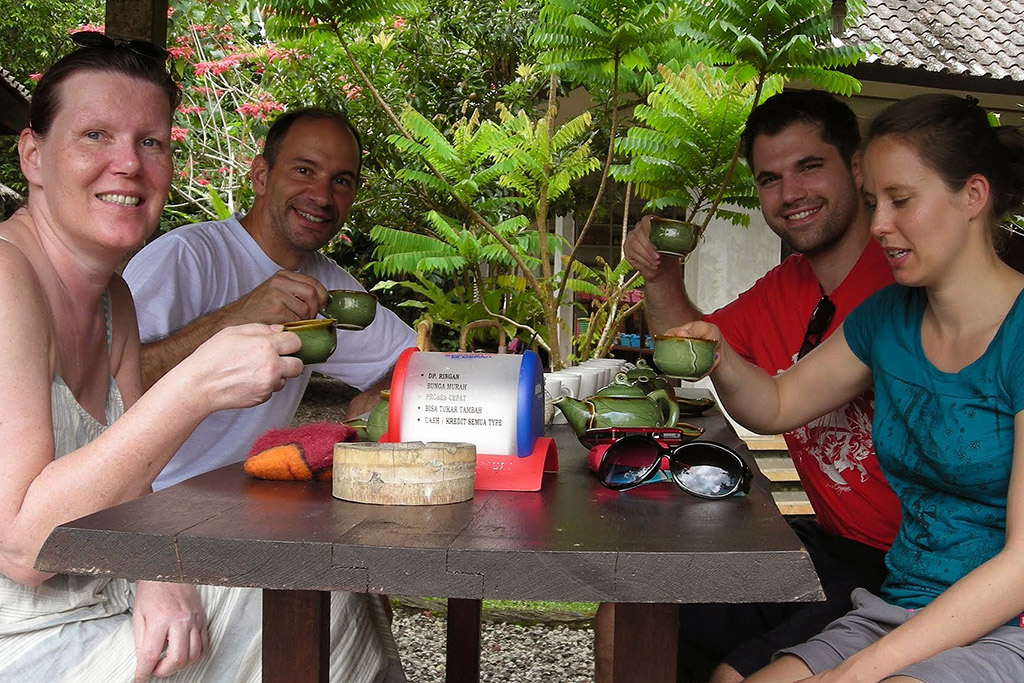
Real Kopi Luwak beans can only be recognized by a specialist under a microscope or with the aroma profile of a gas chromatographic analysis. The quality of this coffee cannot be consistent. It strongly varies due to different factors like the type of coffee beans eaten, the time it has been on the forest floor, and other variables. In cats’ intestines, the coffee cherries are fermented from enzymes that create a full, dark, and musty aroma.
It helps the farmers that the cats always go to the same place in their litter box. Eventually, the beans are washed and lightly roasted.
Animal Cruelty
The high market price encourages the locals to catch wild cats and feed them with coffee cherries. Animal rights organizations claim tens of thousands of cats are being kept extremely cramped in cage batteries. There, they are nourished almost exclusively and inappropriately with coffee cherries. Consequently, the cats suffer from deficiency symptoms such as hair loss and behavioral disorders. Nevertheless, there are coffee farmers who have adopted an ecological and animal-friendly production of Kopi Luwak.
In 1996, German scientists isolated six enzymes in the digestive tract of cats. This way, a synthetic solution with these enzymes mimics the natural effect.
Map
On this map, you can see where all the places described in this post are located:
Practical Information
How to Get There
Ubud is located less than 30 kilometers northeast of Denpasar. Minibusses run from the bus station to Denpasar and in all other directions including Candi Dasa, Kuta, Padang Bai, Lovina, and of course the Ngurah Rai Airport.
However, for your comfort and safety, here you can pre-book reliable and reasonably priced shuttles.
Getting Around
Probably because Ubud is not one of those beach resorts where either families or groups of stag and hen party animals are vacationing, it’s better for solo-traveller than other spots on Bali.
Within the city limits, I was almost exclusively walking. That wasn’t easy. Not because my feet hurt. No, because no cab driver let me pass by without offering his service. I do understand that these drivers are making a living from driving people back and forth.
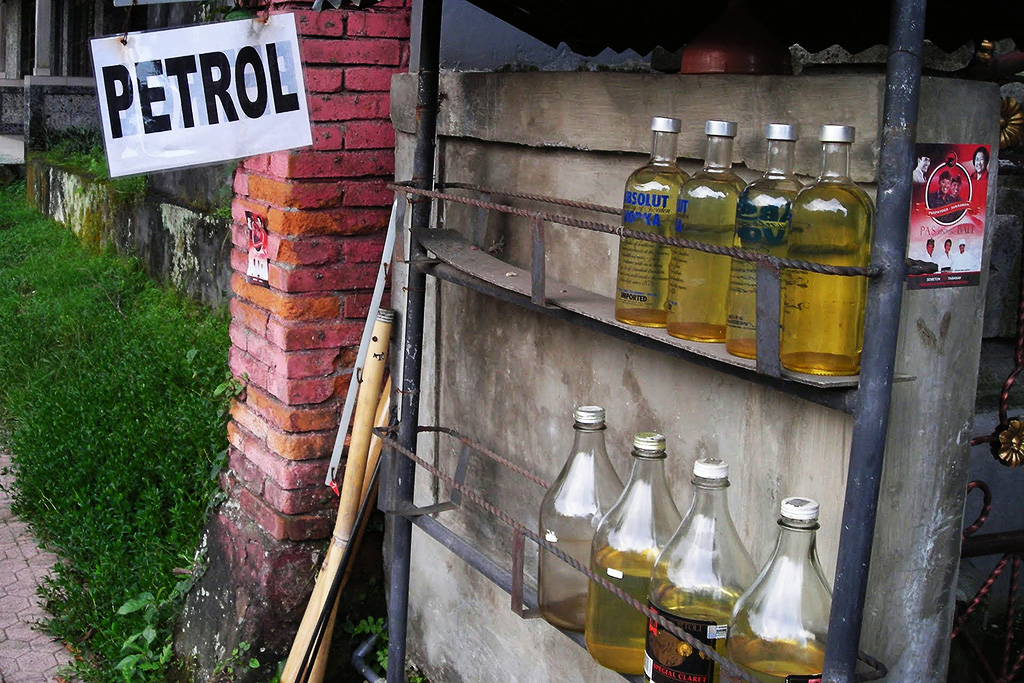
Still, I didn’t get what the guys in the following scenario were thinking.
I pass by a group of drivers. One of them offers me a lift. I deny it in a friendly way. Another one, standing maybe two steps apart, offers me a lift – that I deny, obviously. Three feet further, a third driver offers me a lift – guess what I did, come on, just guess.
So what are they thinking? That I didn’t trust the first driver? That two seconds after I denied the first offer, I got terribly tired and made my mind up?
It might sound funny now, however, it was quite unnerving on the spot.
So again, I was walking. But if you don’t want to walk, there are many, many, many drivers more than happy to drive you.
To help you find the best options for tours like the one I’m describing above, I’m including some tour offers in the What to See section below.
Where to Stay
Particularly in Ubud, you won’t have trouble finding a suitable lodging option. Even many of the smaller guesthouses have tastefully Balinese-style decorated rooms, often with lush gardens, wooden patios, and entrancing pool areas.
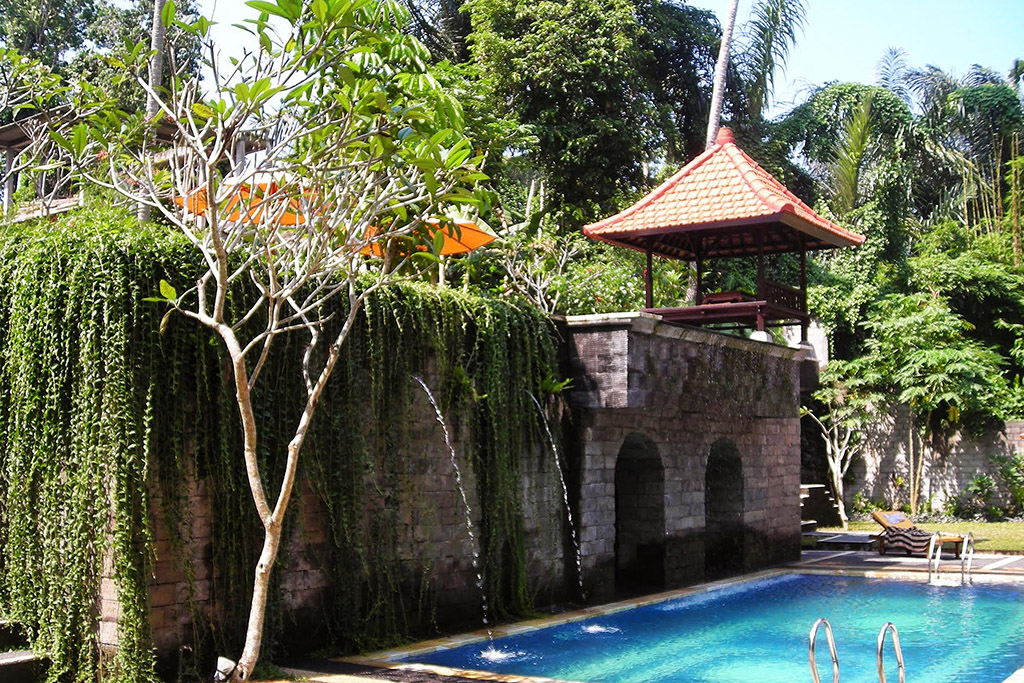
In general, accommodations are very reasonably priced if not even cheap. Therefore, Bali might be a good place to splurge a little. Actually, you can get a luxurious hotel room already for around 70 US$. However, those posh complexes are often quite isolated on the outskirts of town.
I was truly amazed by my stay at the Alas Petulu Villa Resort And Spa*. I had a spacious upstairs room in a wooden two-storey villa with a small balcony where breakfast was served in the morning.
They have a beautiful overflowing pool where you can take a dip and a regular pool for swimming. Also, the owners go out of their way to make you feel more than comfortable. I also liked the location within walking distance from the town center.
However, here is a map in case you want to check out further great lodging options*
What to Eat
Not only is Balinese food simply delicious, but for international visitors, it is also pretty cheap.
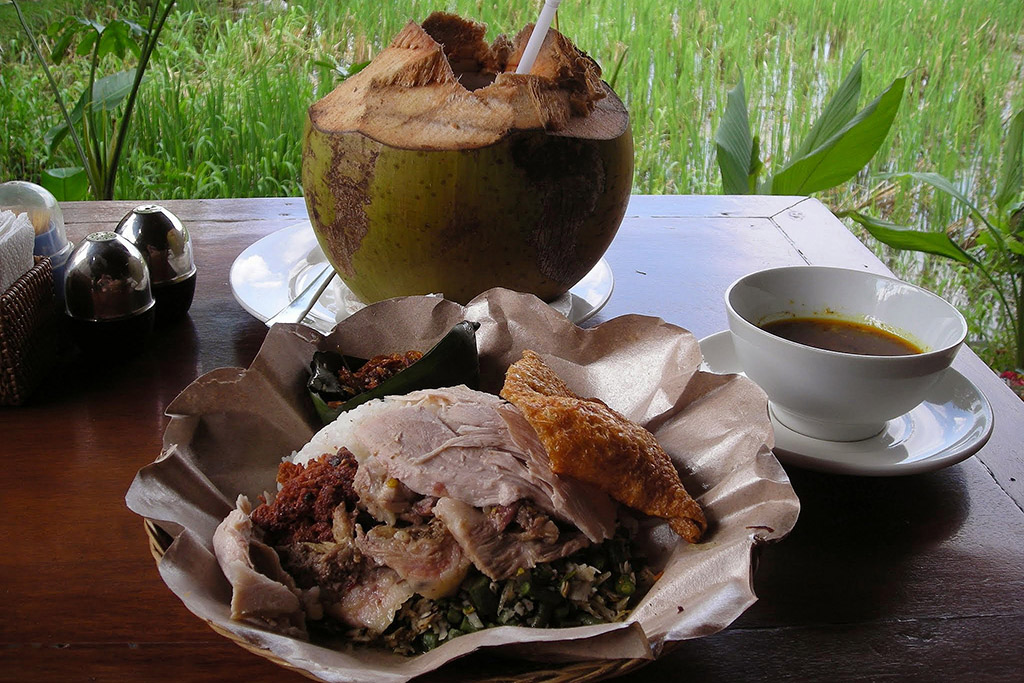
And while it can get a bit more expensive for instance at hotels or fancy restaurants, this would be the average price at the Warungs, Bali’s lovely local eateries. No matter where you eat, it’s not only tasty, but also prepared and served in a very appetizing way.
The Balinese culture is also manifested in their food, obviously. Traditional cuisine is an essential part of local customs. My preferred dishes are – apart from Satay skewers – babi guling, roasted pork, and bebek betutu, which is roasted duck. My absolute favorite, however, is nasi campur. It’s steamed rice with grilled meat cubes, fried tofu, cucumber, spinach, vegetable curry, peanuts, and chili sauce.
What to See
I’m an avid solo-travelling woman. Since solo travel doesn’t equal solitude, I love to join organized tours here and there. Since this is not always that easy in Bali, here are some valid options of how to get to see what this magical island has to offer in a safe and easy way*:
Good to Have
Be a scout and remember the motto Be prepared.
As you leave in the morning to explore, make sure to not only have your money and your sunshades on you.
Good to Know
Don’t let the half-naked tourist hordes in some beach resorts fool you: Balinese dress very modestly. This goes particularly as you leave the beach area to explore remote villages and, most of all, sacred complexes.
It is always a good idea to carry at least one light, large scarf with you to cover up in case you decide to visit a sacred place. And I’m not talking only to the ladies, men have to cover, too.
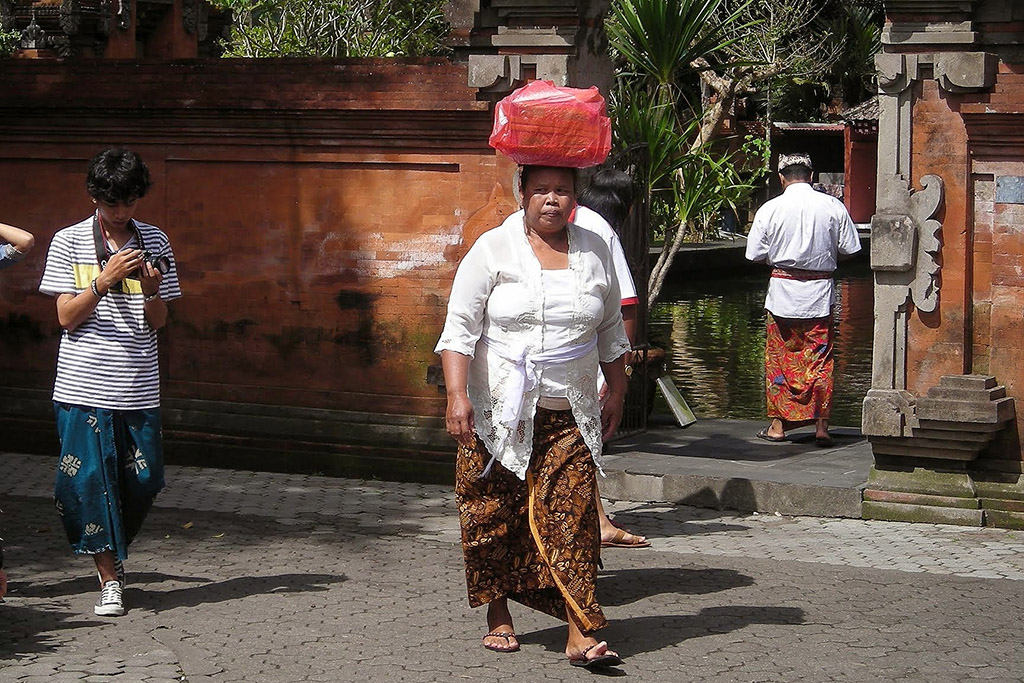
You always have to wrap a sarong around your hips – even if you are wearing long pants. Locals also wear a temple scarf around their waist. Foreigners don’t need necessarily to do so.
Remember that you’re neither supposed to expose your shoulders nor your arms. So if you are wearing a sleeveless top, you also need a scarf to cover your shoulders.
Often, you can rent sarongs at the entrance to temples. Or they will be someone selling them. Since these vendors cater mostly to desperate people who need a piece of fabric right away, their prices are ridiculously high.
It might also be a good idea to have a pair of old socks with you that you can wear in the noonish heat when walking on the hot stones around the temples as you have to take your shoes off.
You’ll find more tips on Bali’s DOs and DONTs in my post on How (not) to behave in BALI.
More Useful Stuff
Especially when you are walking a lot or cycling, you will appreciate a catlick using some wet wipes on your hands, face, and neck. Also, the last resort in case some bathroom along the way has no toilet tissue. Remember to freshen up your sun protection especially after wiping your face – so make sure to have a travel-size bottle of sun protection with you.
I have all these things in an extra pouch that I just stuff in my daypack in the morning without having to remember every single piece.
Of course, you shouldn’t forget to take a hat, good sunshades, and a large bottle of water with you, too.
Cash And Cards
In Bali, you pay in Indonesian Rupiahs, abbreviated IDR.
There are coins from 100 up to 1000 IDR and banknotes from 1000 to 100,000 IDR. Consequently, the largest Indonesian banknote is worth about US$ 7.
Ubud is a tourist hotspot, hence, credit cards are widely accepted. Obviously, you can get cash at ATMs.
One US-Dollar equals 16.57 Rupiahs (IDR) and one €uro equals 19.33 Rupiahs (IDR) as of November 2025. You can check the current rate on this page.
Language
The official language on the island of Bali is Indonesian.
Amazingly, Indonesian is one of the languages offered on babbel. As usual, the first lesson is free. There you learn the most important words and polite expressions to interact with people.
I gained some basic knowledge for my trip to Bali. It’s amazing how easy bahasa was to learn. Especially since it’s written in Latin letters.
Since Ubud is very touristy, everyone in the tourist industry has at least a rudimentary command of the language. However, sometimes the accent is so peculiar that you won’t understand it right away. Also, locals might not really understand what you are saying but just grasp the supposed meaning from one or two words they got from your sentence. Hence, prepare for some hopeless explaining, quirky conversations – and many bright smiles.
Communication and Connection
Like during most of my trips where European roaming is not available, I did not get a national SIM card. I rather used free WiFi. There was a connection to the internet without any issue at basically every eatery or café and, of course, hotel. Worked like a charm.
But if you insist on being online 24/7, you can get a national SIM card right at the airport.
In Indonesia, plug types C and F are the official standard. The standard voltage is 230 V and the frequency is 50 Hz.
But as you know, nowadays, all these chargers for phones and readers and computers have integrated adapters. Therefore, different voltages and frequencies don’t really matter.
By the way, you’ll find this kind of practical travel info in my post World’s Most Complete Travel Information. Actually, it’s an indispensable globetrotter classic.
Ubud was just one of the amazing places I’ve seen on my trip to Bali. Go to the main post to check out all the other destinations.
Pinnable Pictures
If you choose to pin this post for later, please use one of these pictures:
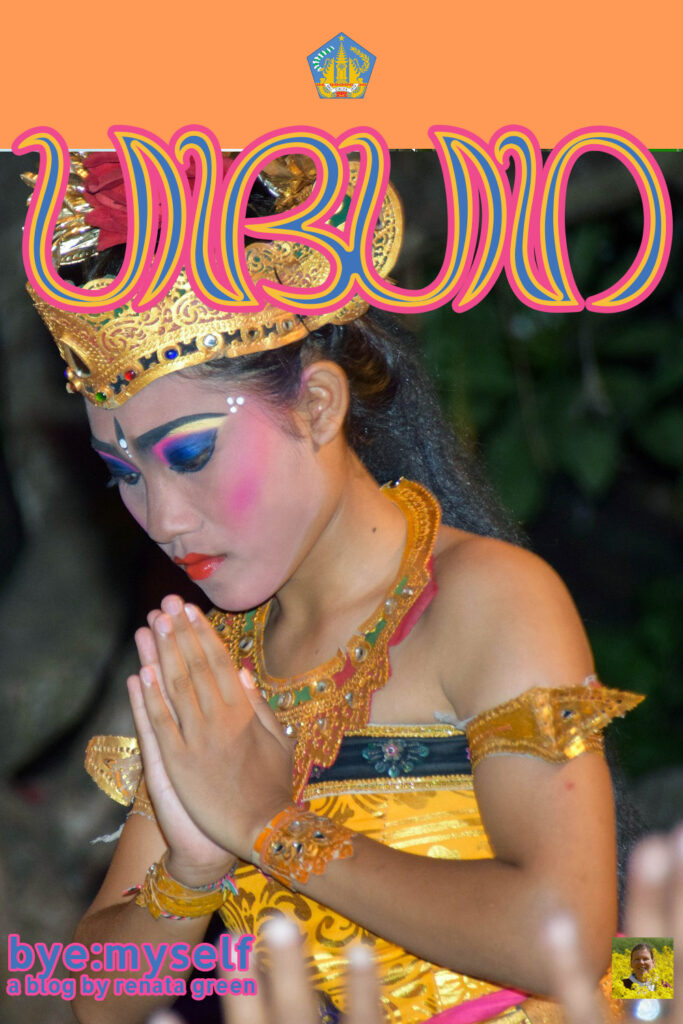
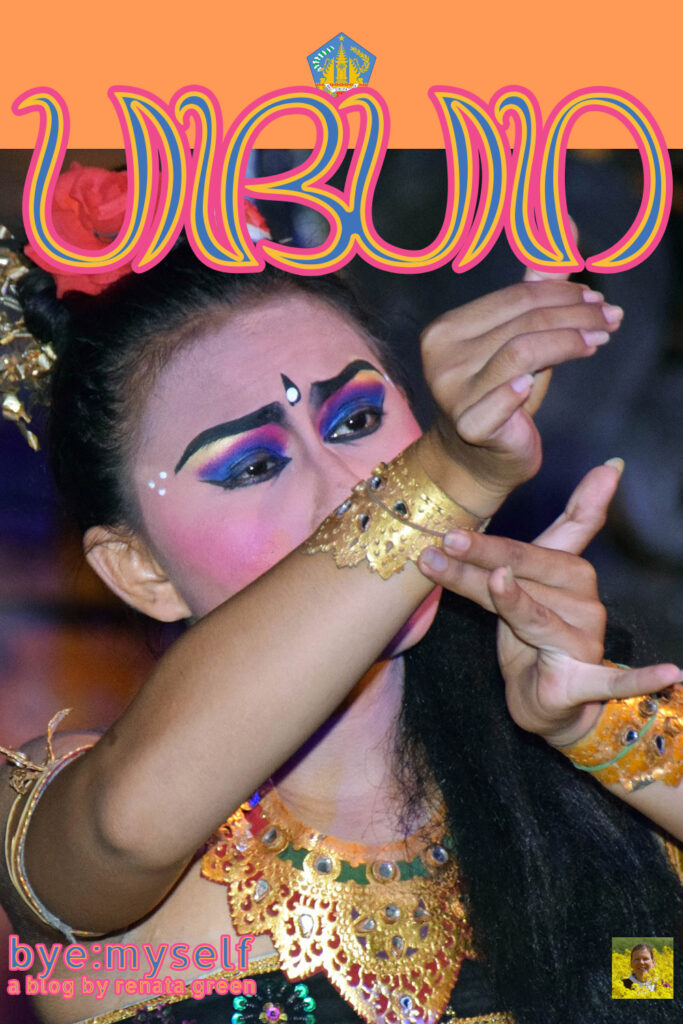
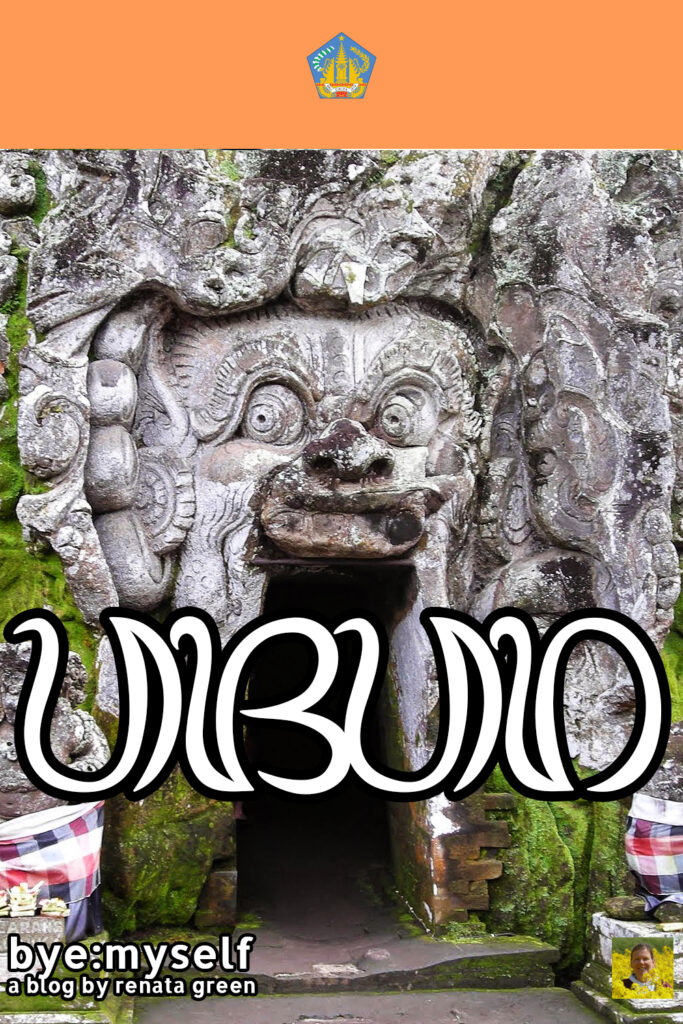
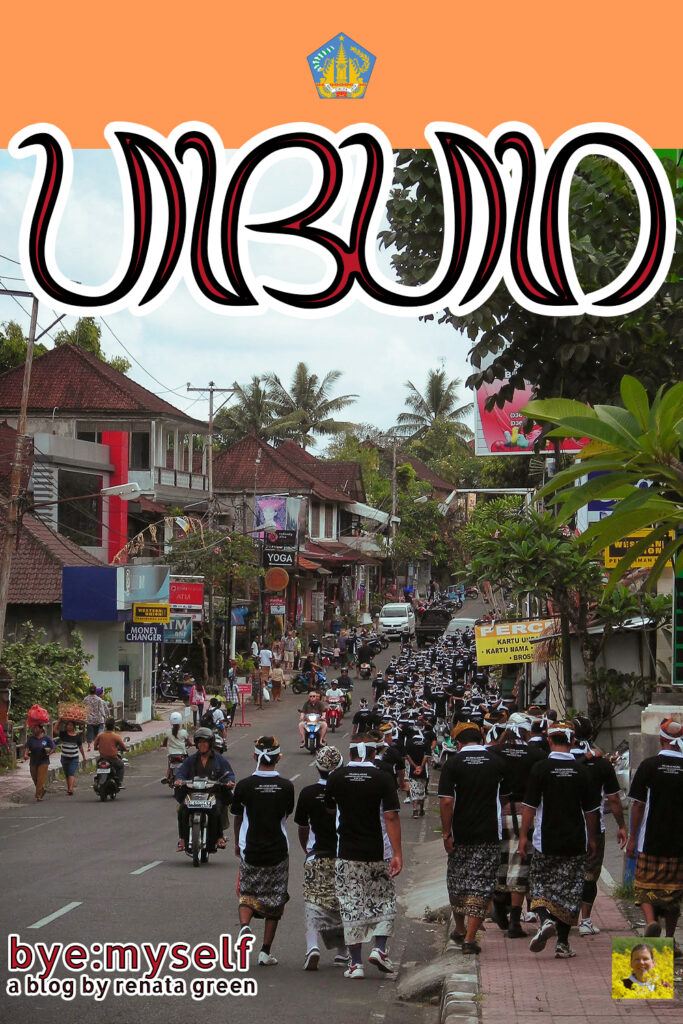
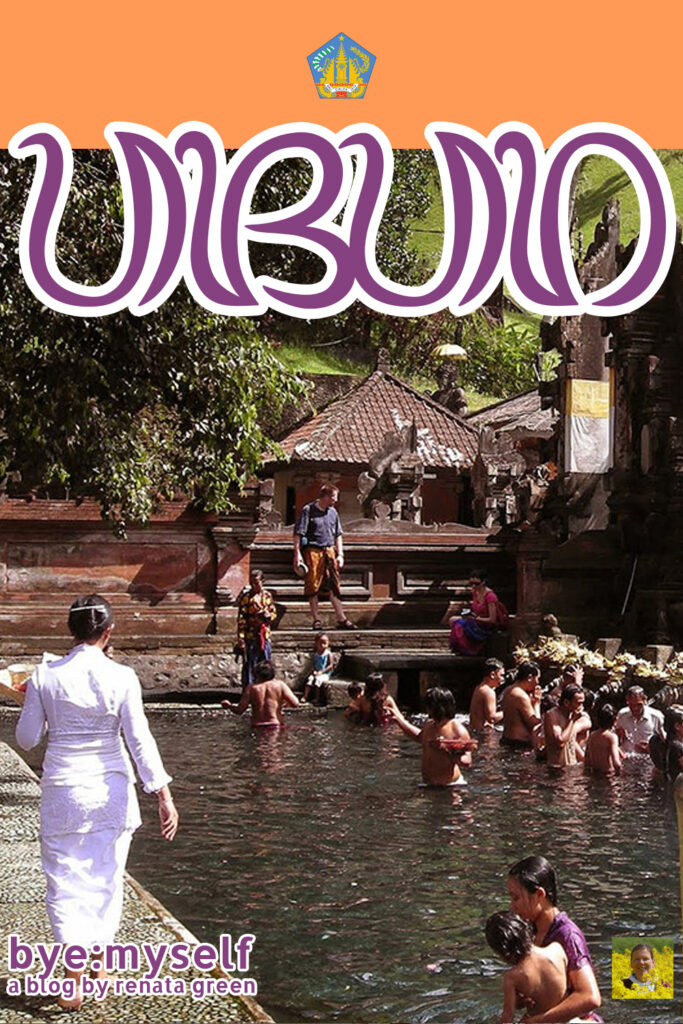
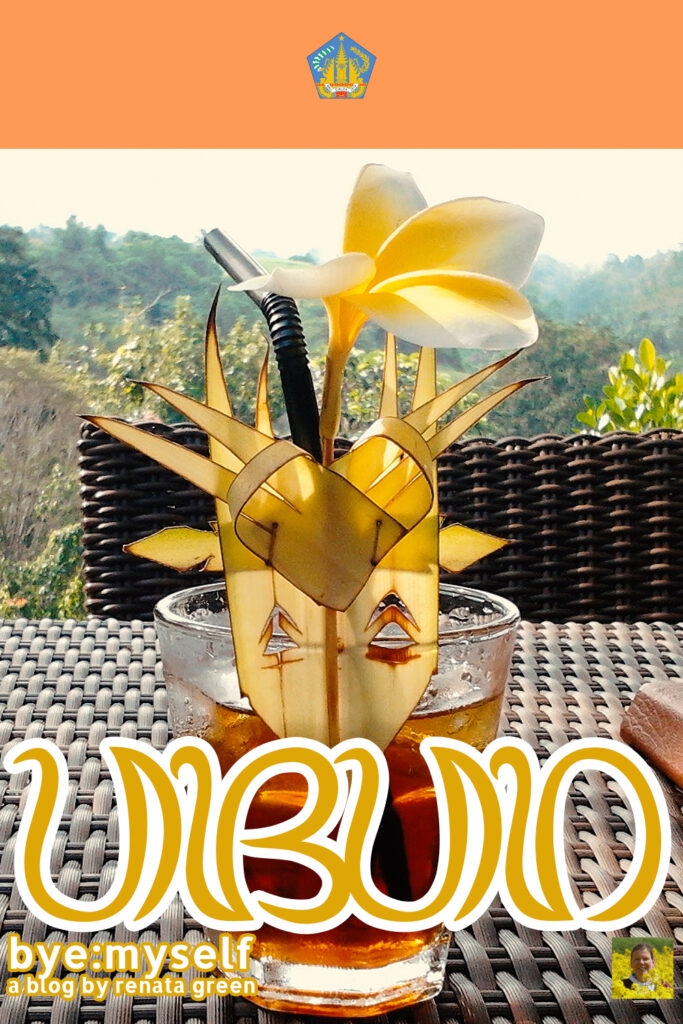
Note: I’m completing, editing, and updating this post regularly – last in November 2025.
Did You Enjoy This Post? Then You Might Like Also These:
LOMBOK – Bali ‘s serene alternative
UBUD – culture, tradition, and some monkey business
How (not) to behave in BALI
LEGIAN BEACH – Surf Your Turf
PADANG BAI – Gateway to Bali’s Treasures
TRAWANGAN, MENO, or AIR – which island is for you?
KECAK – a German Dance in Bali
LOVINA BEACH – Bali’s Quiet Escape
* This is an affiliate link. If you book through this page, not only do you get the best deal. I also get a small commission that helps me run this blog. Thank you so much for supporting me!
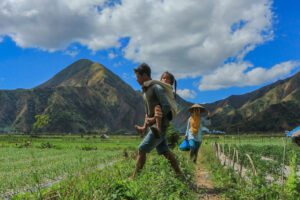
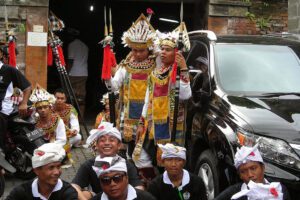
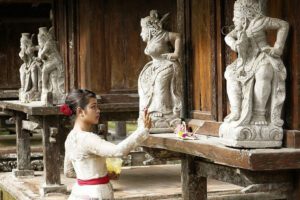
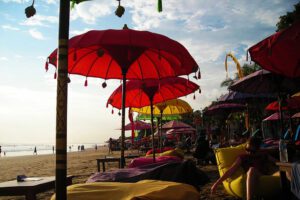
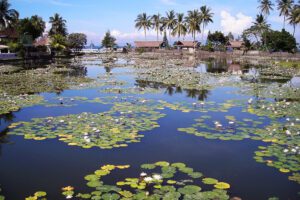
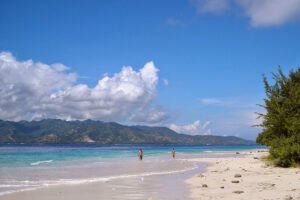
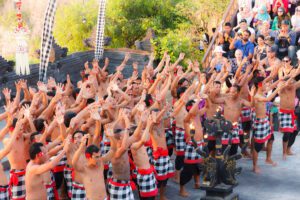
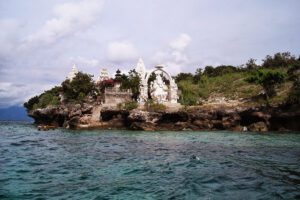
There are statues of monkeys in the forest. The sculptures are believed to symbolize energies supporting the power of the temples, according to The Culture Trip.
Thanx for adding this interesting info 🙂
Such a great, detailed guide. Bali is on my dream list, so I will definitely want to see the popular Ubud. I know that the place is quite touristic, but it still has many interesting attractions and places worth seeing, like The Monkey Forest or Neka Art Museum.
This was an interesting read as I learned a lot about Ubud and the culture. There is so much culture in each event!
I love Ubud!! But what I love more is your take on the vegan/ spiritual tourists that took over because I feel the same way about them. Yes they are better than the drunk Aussies in Kuta and Canggu, but they still are overtaking the local culture. I thought I’d detest Ubud for that very reason, but I was really pleased with my time there. Sure, some things were insanely gimmicky and touristy, but you can still see that it was (and is) an amazing place before mass tourism and westernization took over.
It’s nice how we are on the same page 😉
Thanks for the detail in the post. We almost booked Ubud as we love being immersed in other cultures and away from the crowds but we help back by the instagrammers that’s create crowds. However your post makes me want to go again
Thank you so much for a complete and detail guide on Ubud’s culture and tradition. Although I have visited Indonesia, I am yet to visit Ubud. When I do, I would love to experience a Legong performance.
We had only a quick day in Ubud but would want to go back to see more on a return visit to Bali. Although I too worry about over-tourism in this area. We had a great private guide who took us to the less popular spots and we enjoyed the outdoors in most places without crowds. It would be great to have enough time to enjoy some of the museums and local shows. But we would definitely pass on the Luwak coffee this time.
That jungle swing in Bongkasa looks mental, I would never go near it not even for a pretty photo.
I tend to get mistaken for a local in SE Asia and Japan with my Chinese ethnicity (despite my touristy clothes) and can become invisible to taxi drivers, but I’ve no such luck in India so thank goodness for Uber.
I went to Bali for my 30th and had the same reaction from my friends about the places we visited. I personally loved ubud, so beautiful and very cultural. We went in the wet season though which definitely was true to its word. Still absolutely loved it though and would recommend to anyone thinking of booking!
I love learning about different cultures and places to visit. Thanks for the inspiration! ???
Such wonderful details. Looks like a great cultural experience vacation.
It must be said that when I pause to think about it, it is undeniable that there are indeed cultures that are thousands of miles away from us, but it is nice to see them explained and to be able to pause better in creating one’s own judgment on the matter.